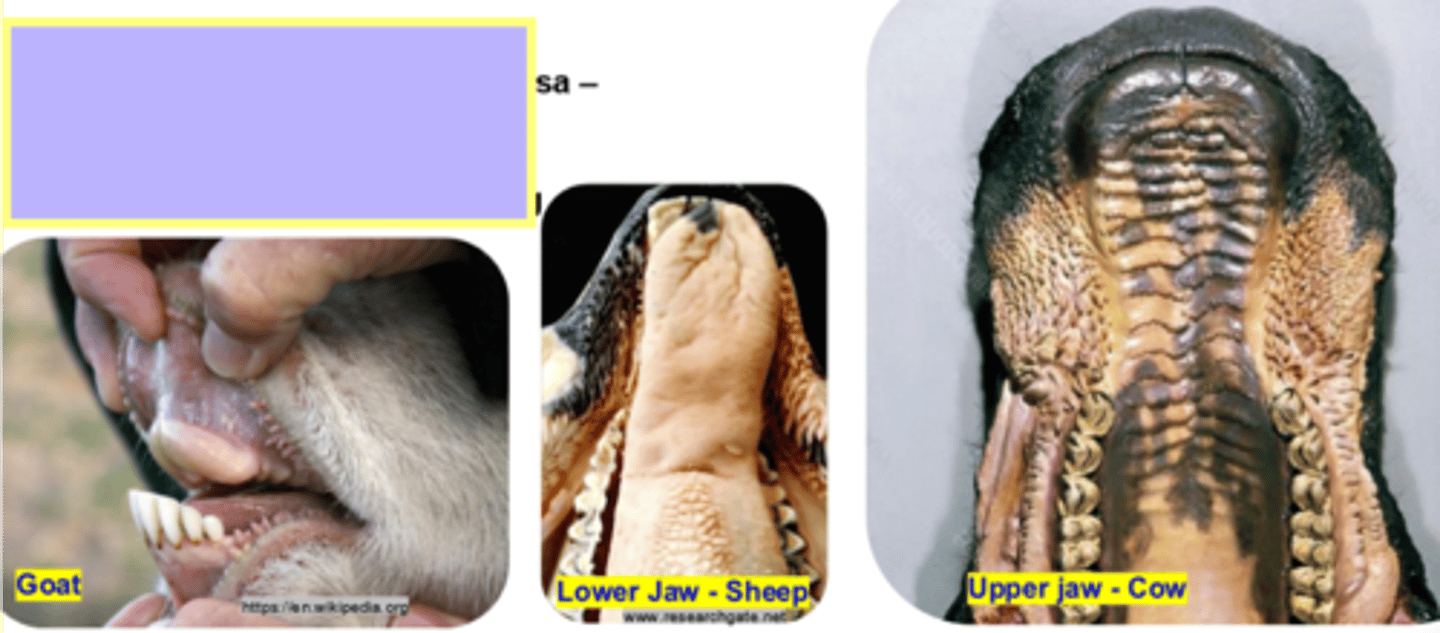Oral Anatomy, Dentition, Salivation
1/226
There's no tags or description
Looks like no tags are added yet.
Name | Mastery | Learn | Test | Matching | Spaced |
|---|
No study sessions yet.
227 Terms
crown
- a
- the visible part of the tooth above the gumline
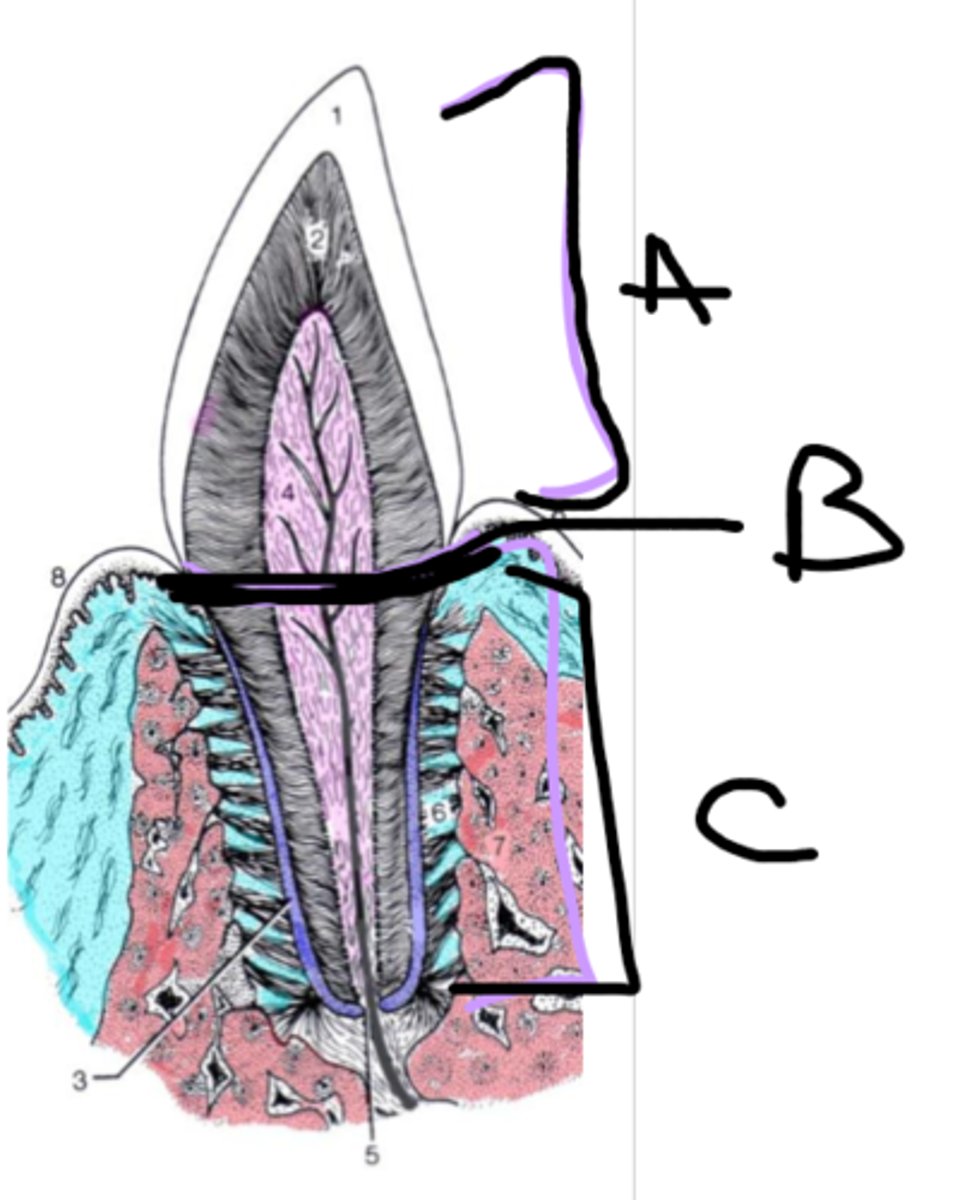
neck
- b
- the junction between the crown and the root at the gumline
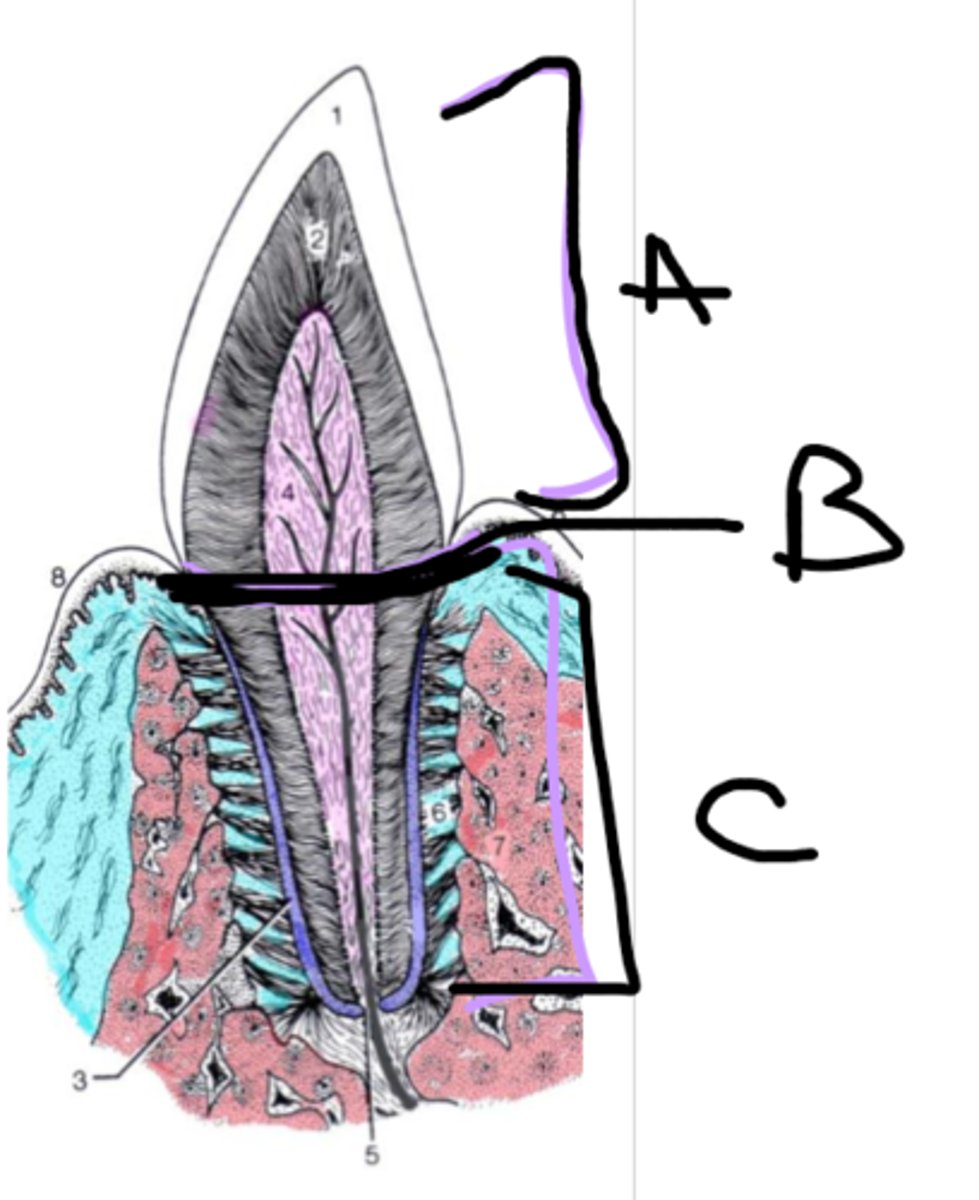
root
- c
- the part of the tooth embedded in the socket
- number of _________ varies (single, double, multiple)

furcation
- the area where the roots diverge in multi-rooted teeth
- common site for periodontal disease

enamel
- blue arrow
- hardest substance in the body, protects the tooth
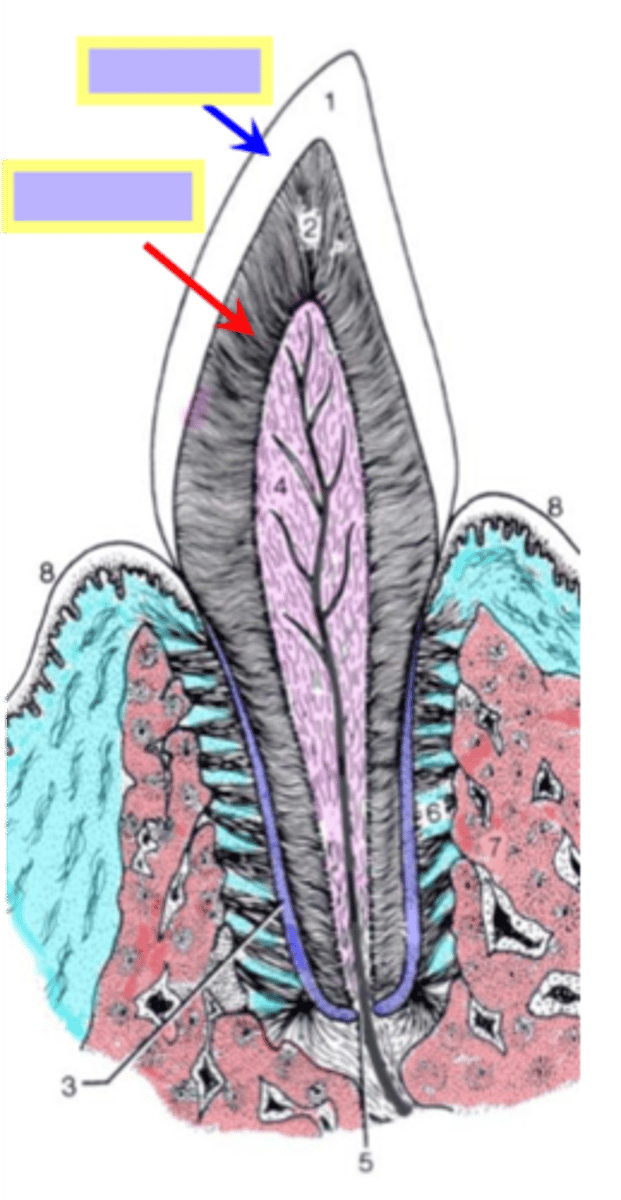
enamel
- 1
- hardest substance in the body, protects the tooth
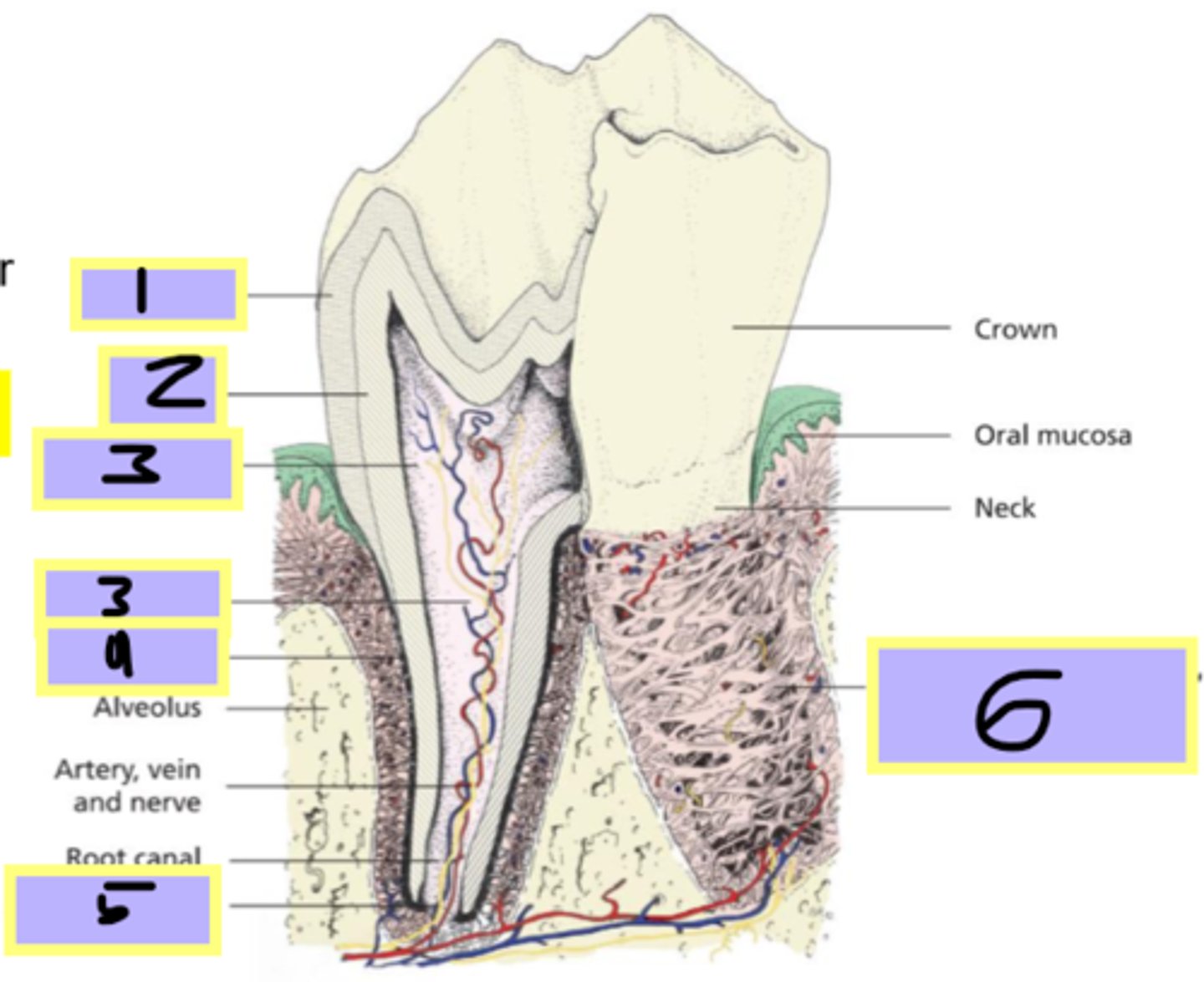
dentin
- red arrow
- forms the bulk of the tooth and provides support
- continues to form throughout life

pulp
- 1
- contains blood vessels, nerves, and connective tissue
- provides nutrients to tooth and allows for sensation
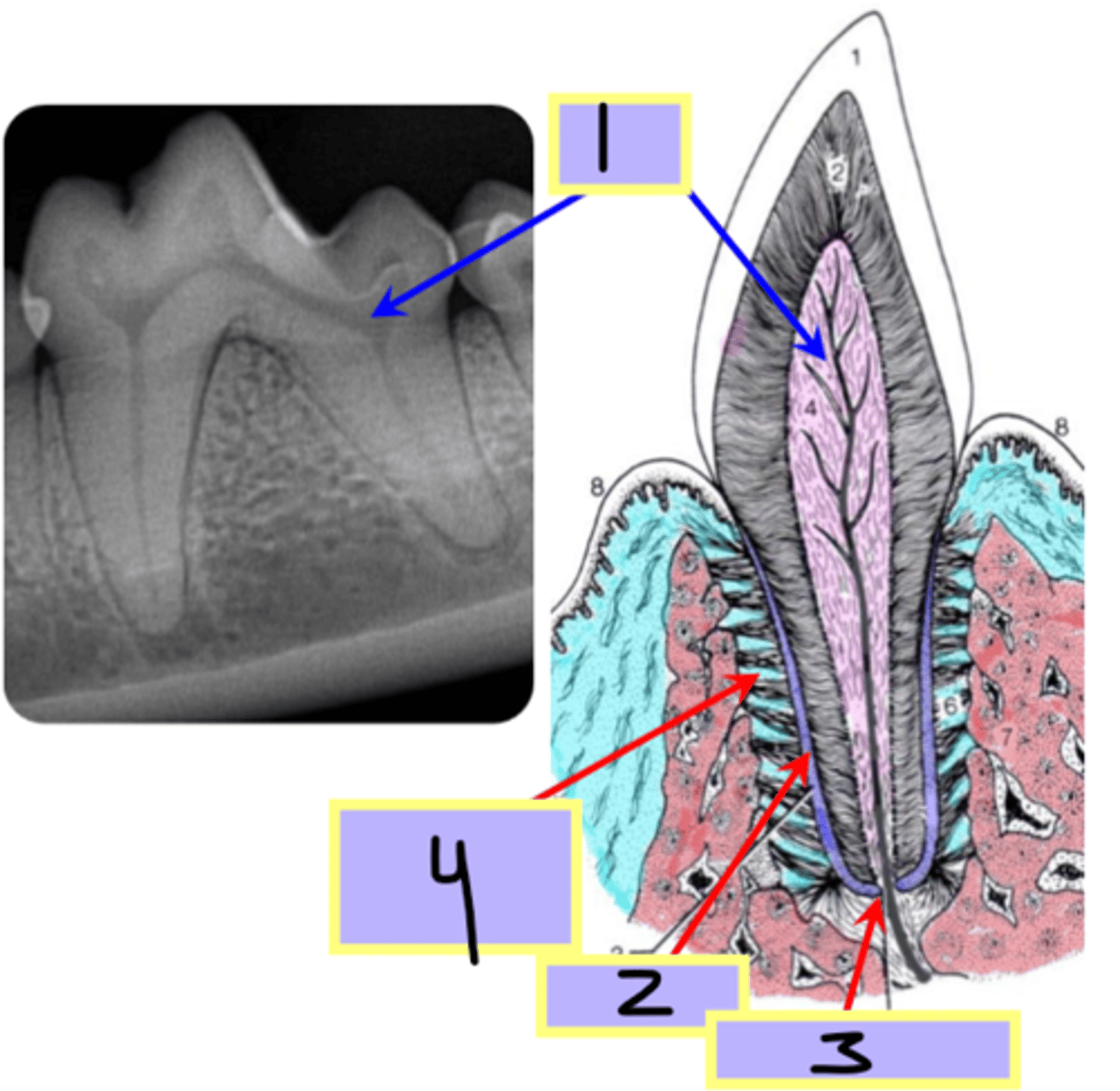
dentin
- 2
- forms the bulk of the tooth and provides support
- continues to form throughout life

cementum
- 2
- covers the root, attaches the tooth to the periodontal ligament
- important for tooth anchorage
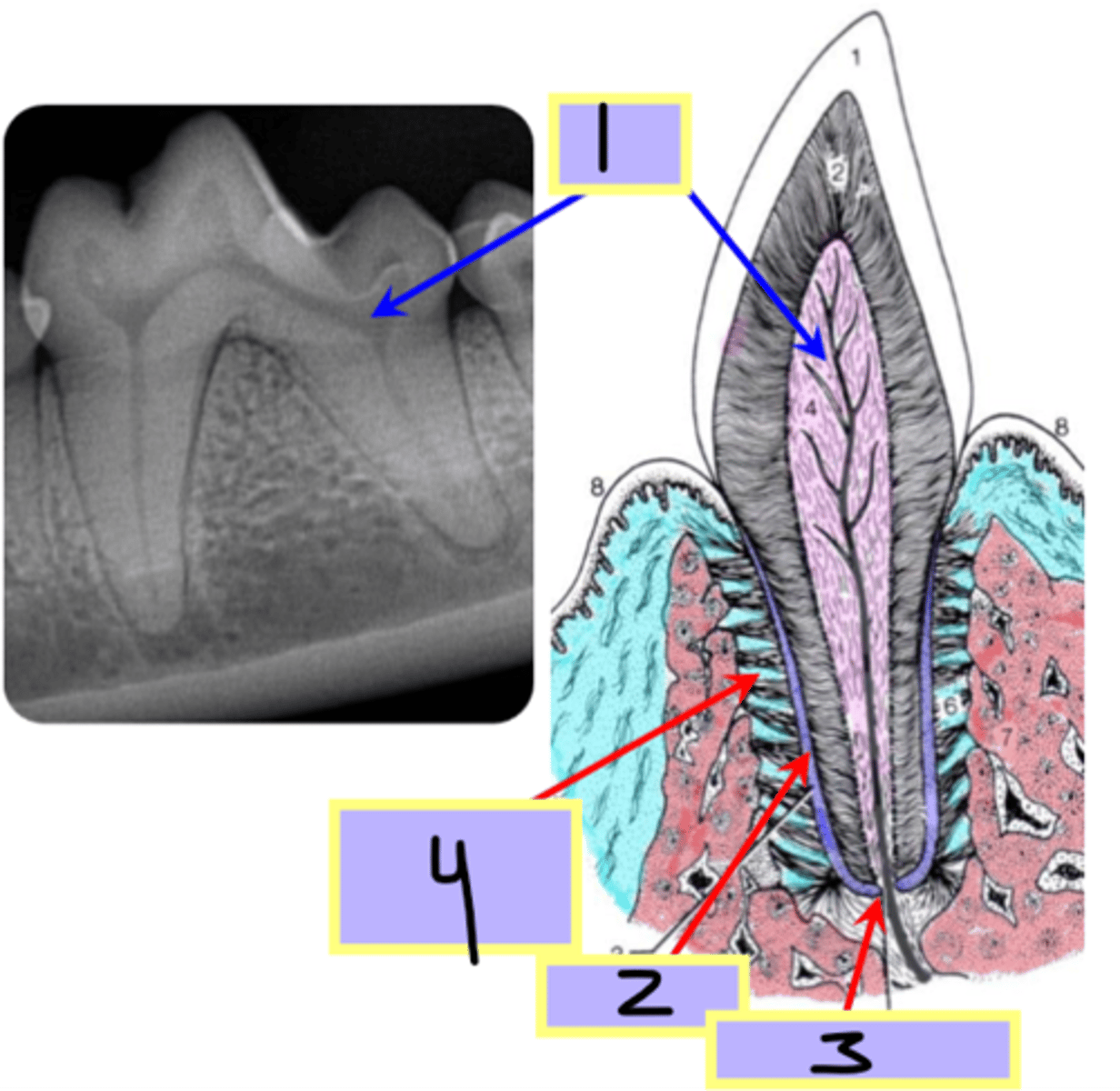
pulp
- 3
- contains blood vessels, nerves, and connective tissue
- provides nutrients to tooth and allows for sensation
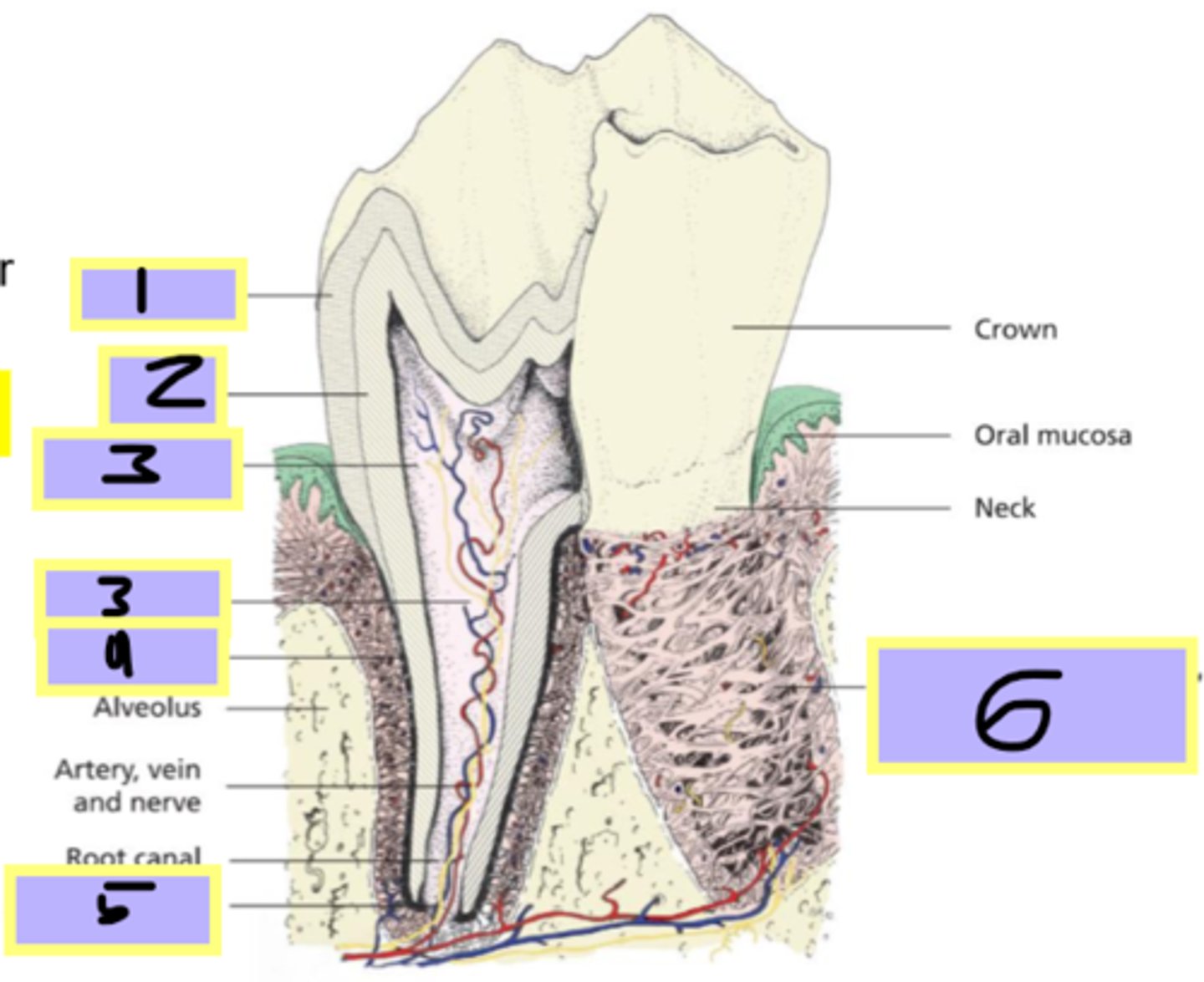
cementum
- 4
- covers the root, attaches the tooth to the periodontal ligament
- important for tooth anchorage

apical foramen
- 3
- passage for the nerves and blood vessels
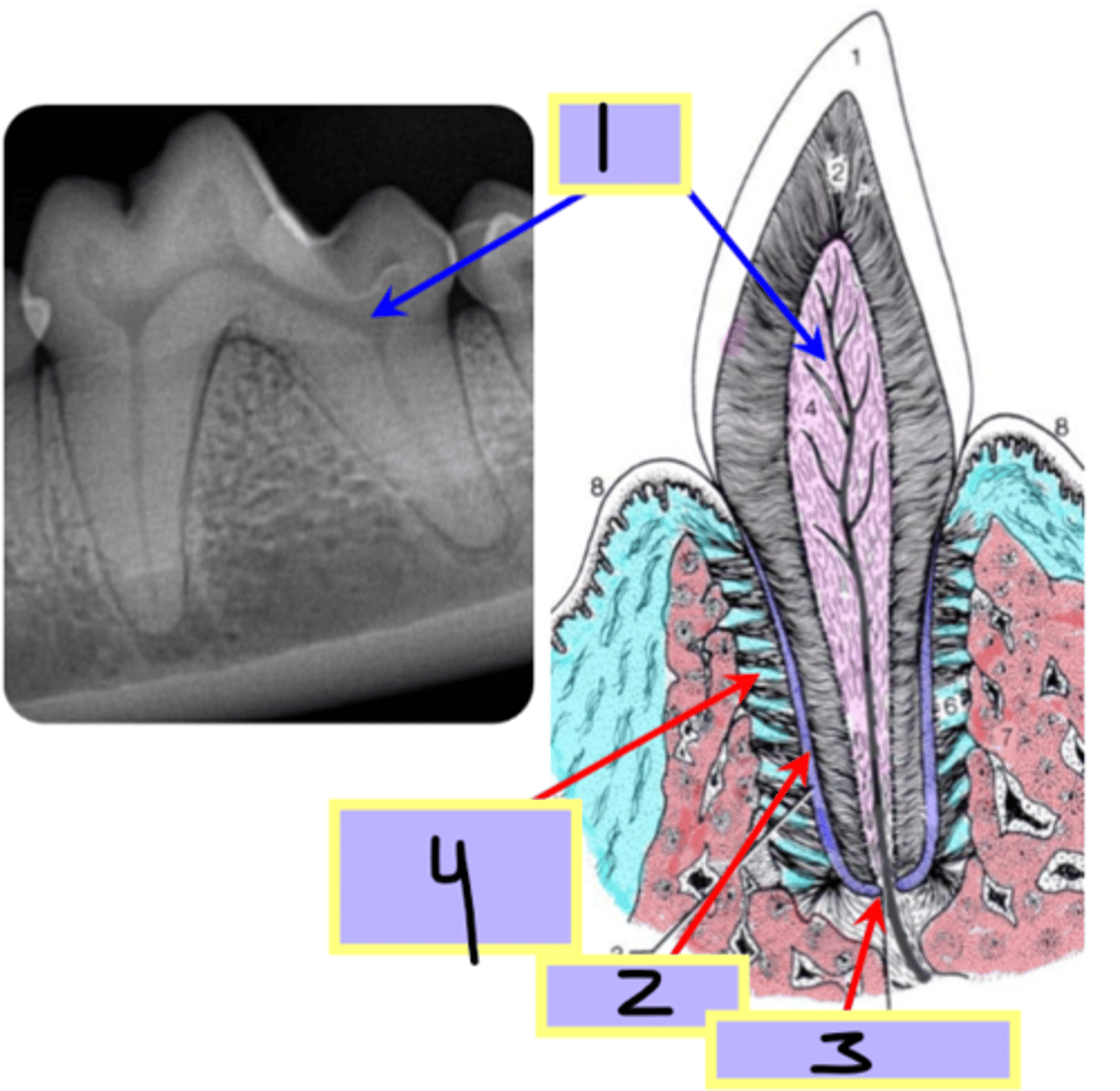
periodontal ligament
- 4
- connects the gums to the cementum on root

apical foramen
- 5
- passage for the nerves and blood vessels
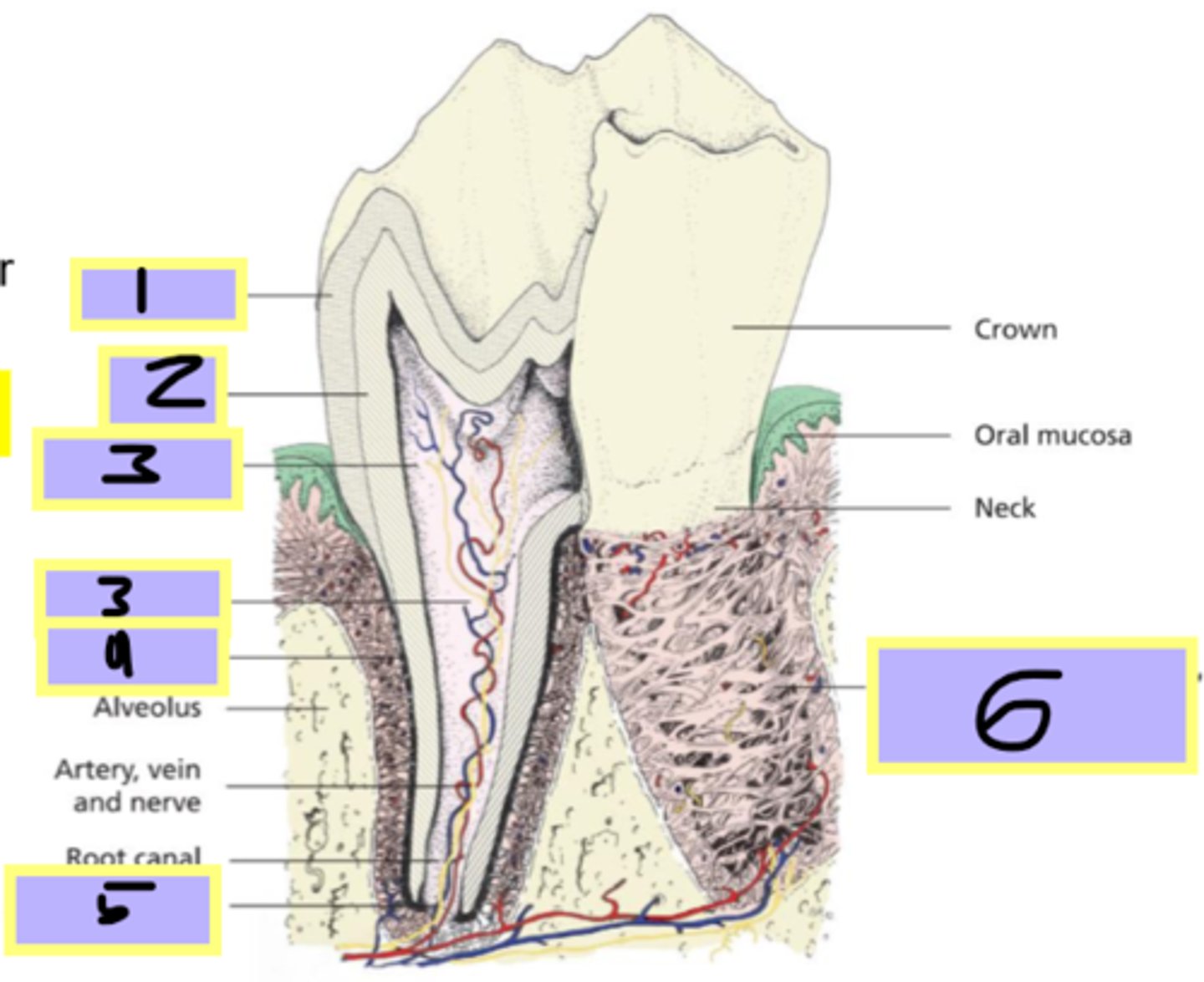
periodontal ligament
- 6
- connects the gums to the cementum on root
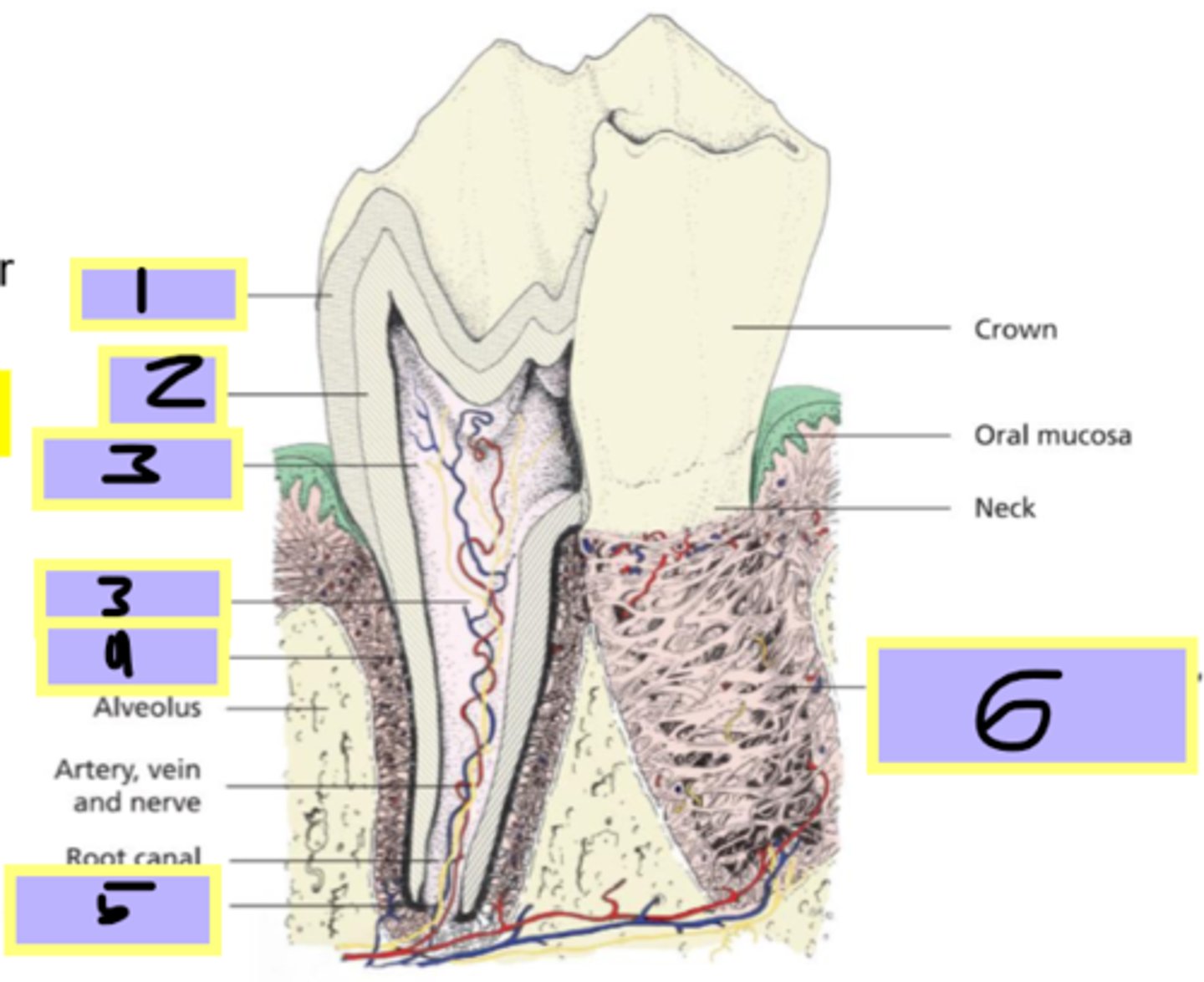
dental pad
- ruminants
- modified because of no upper incisors
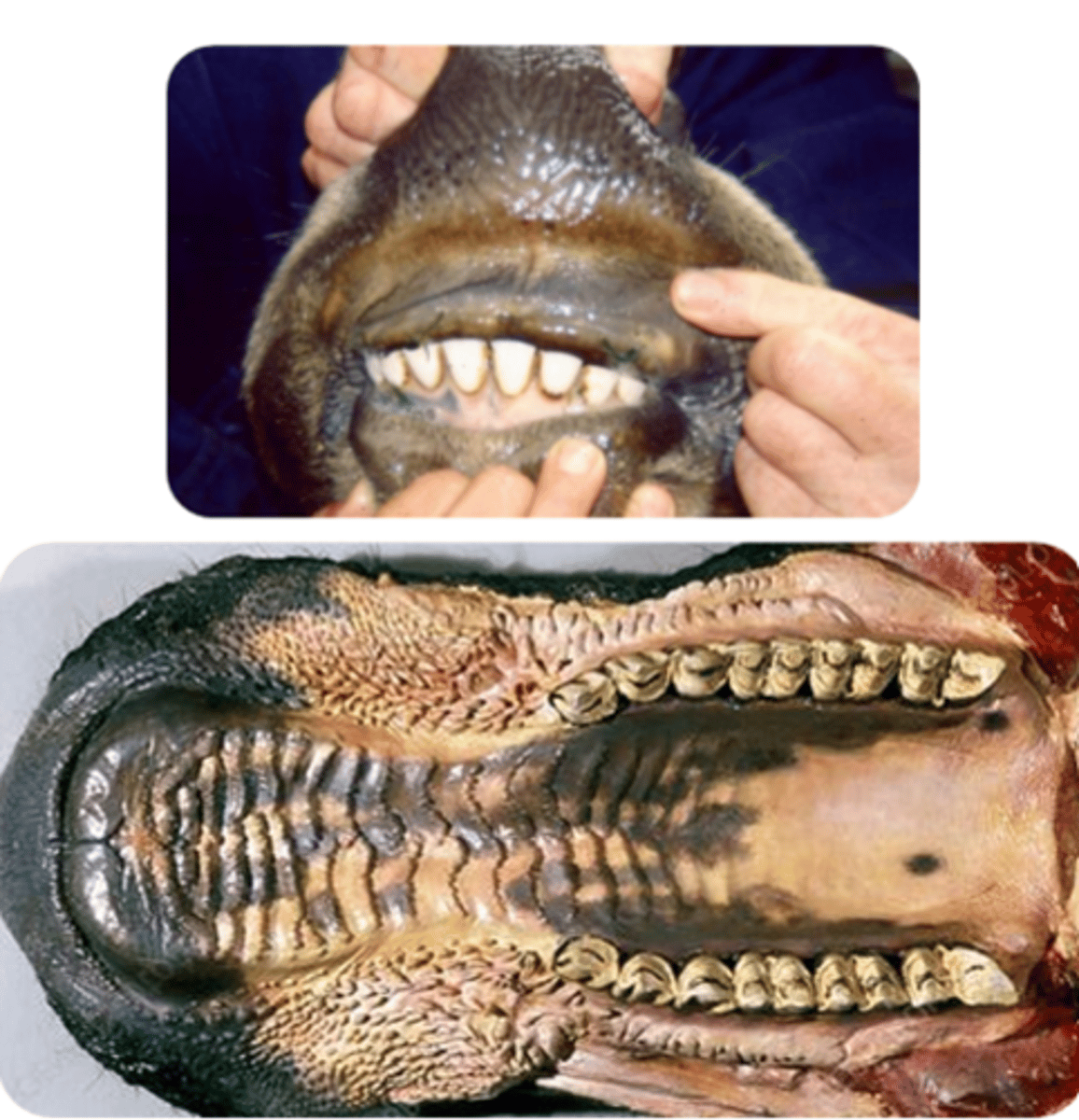
mesial surface
- red
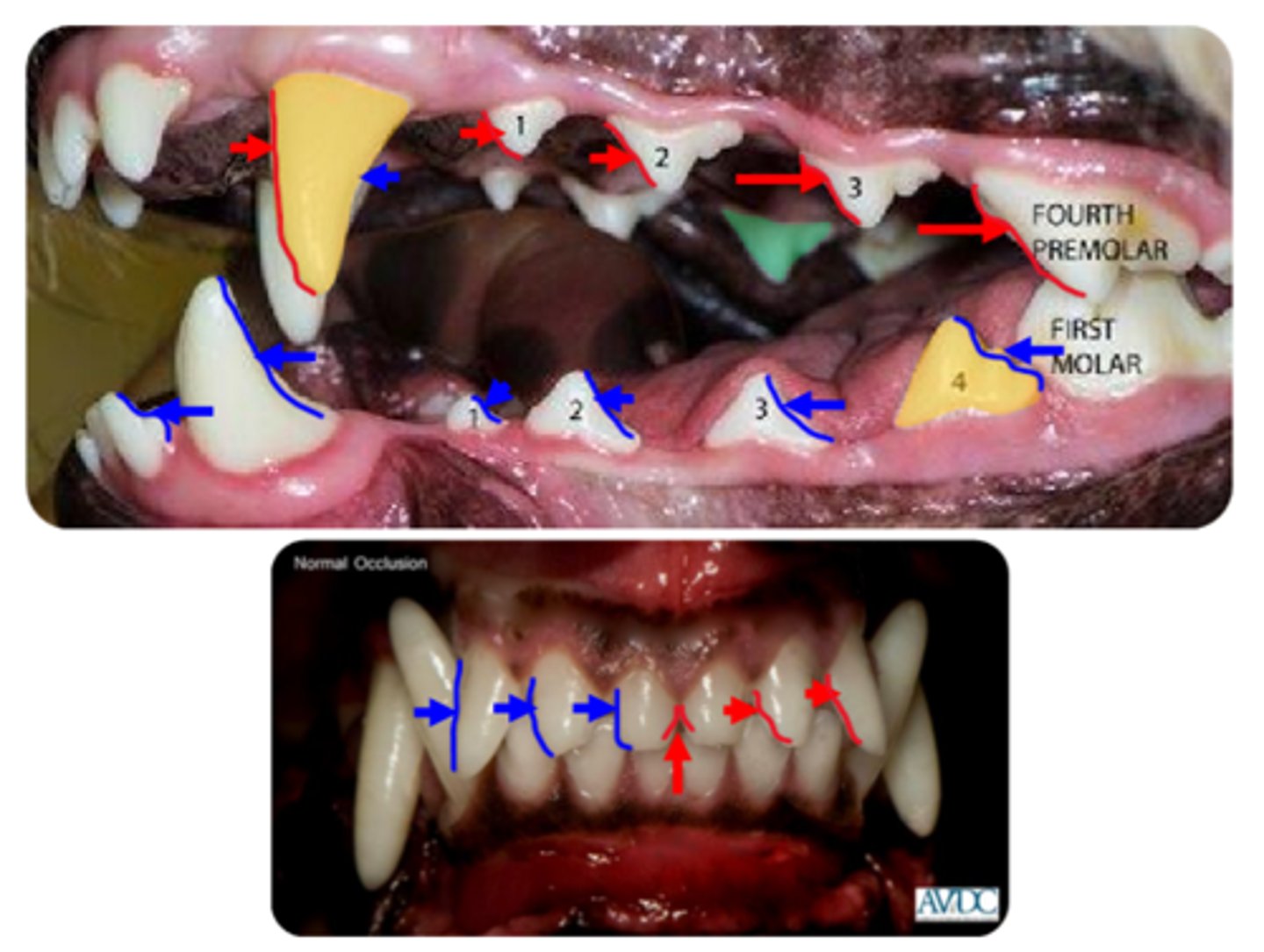
distal surface
- blue
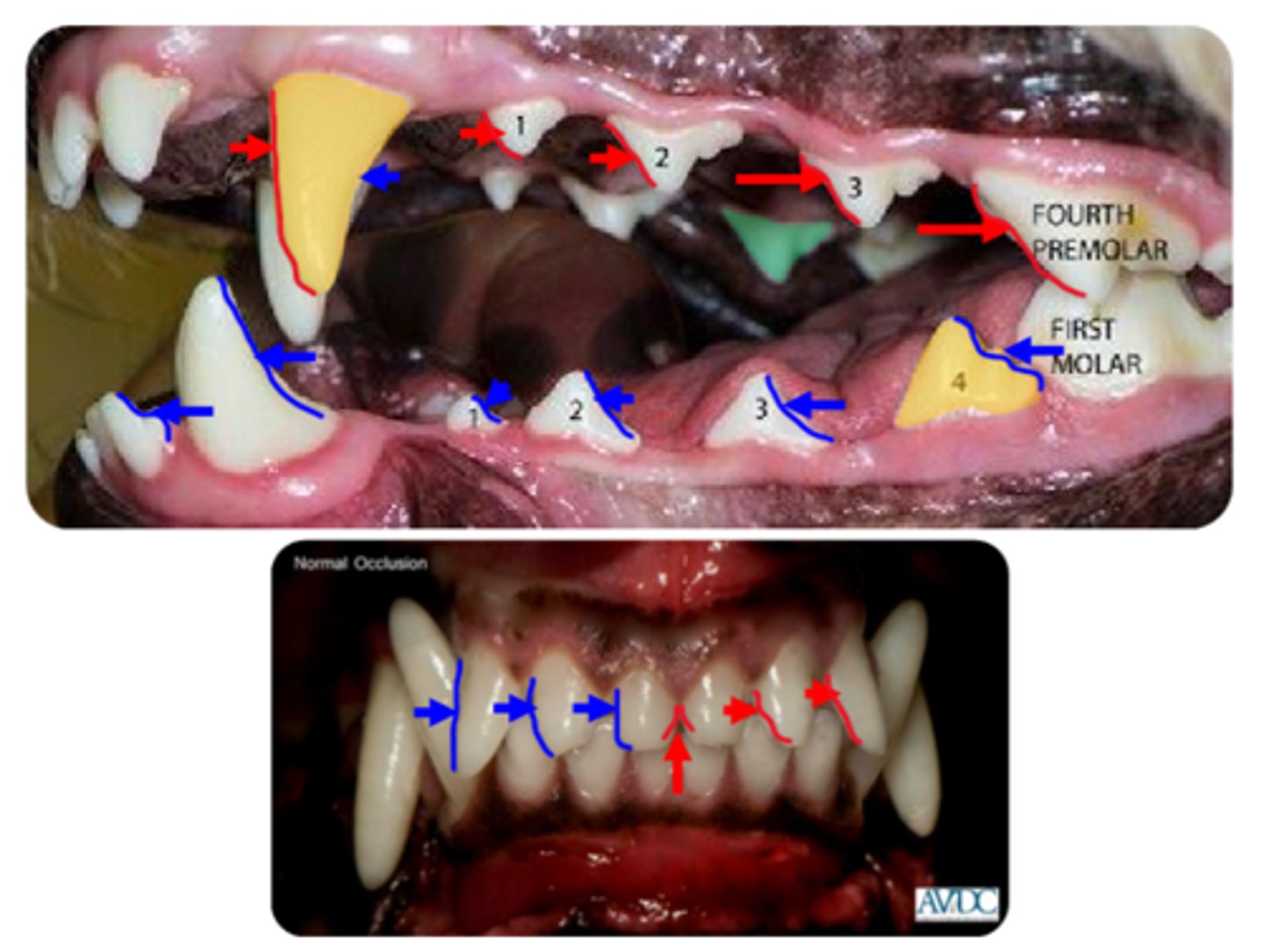
lingual/palatal surface
- green
- towards tongue
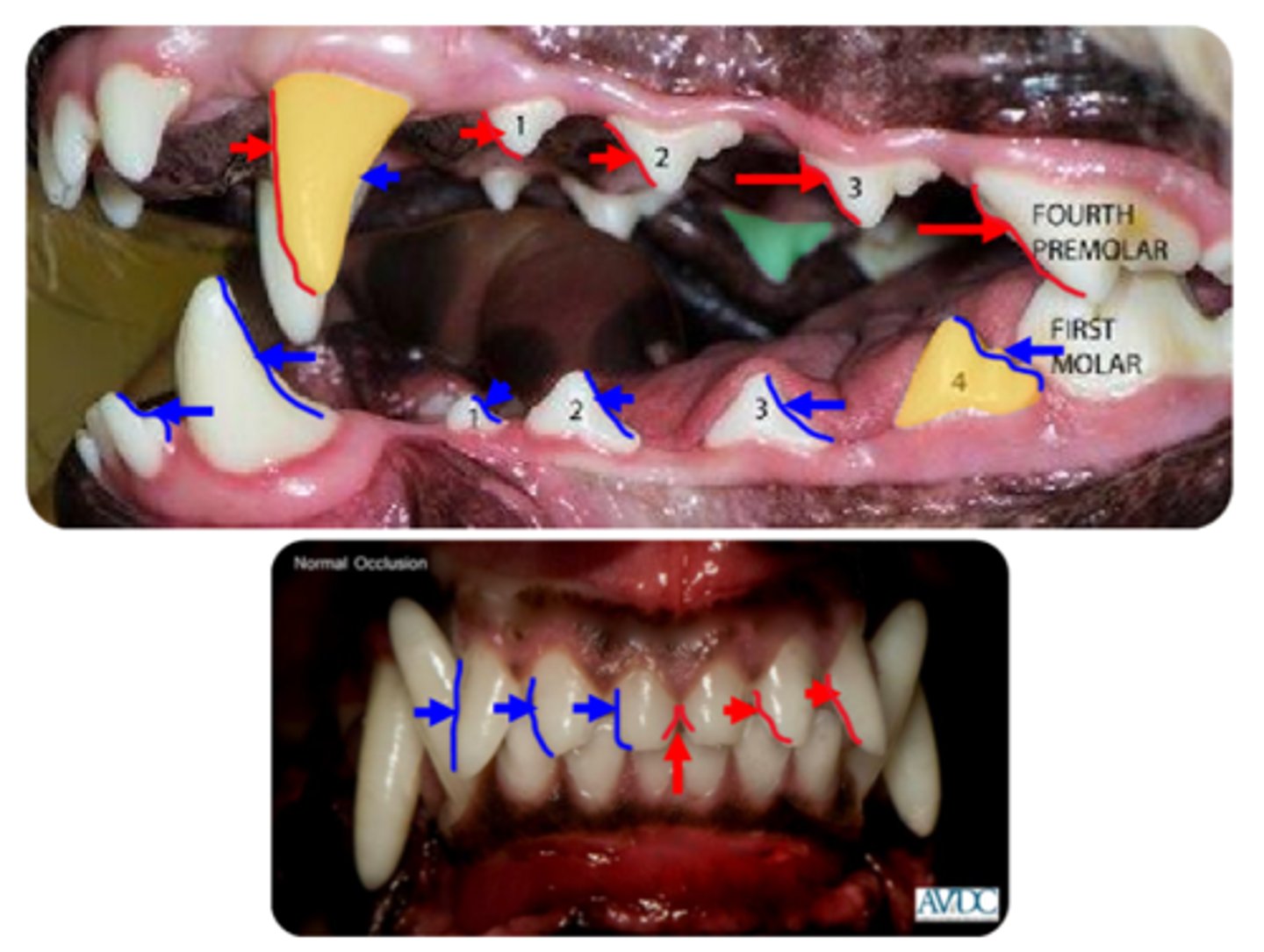
labial/buccal surface
- yellow
- towards lips/cheeks
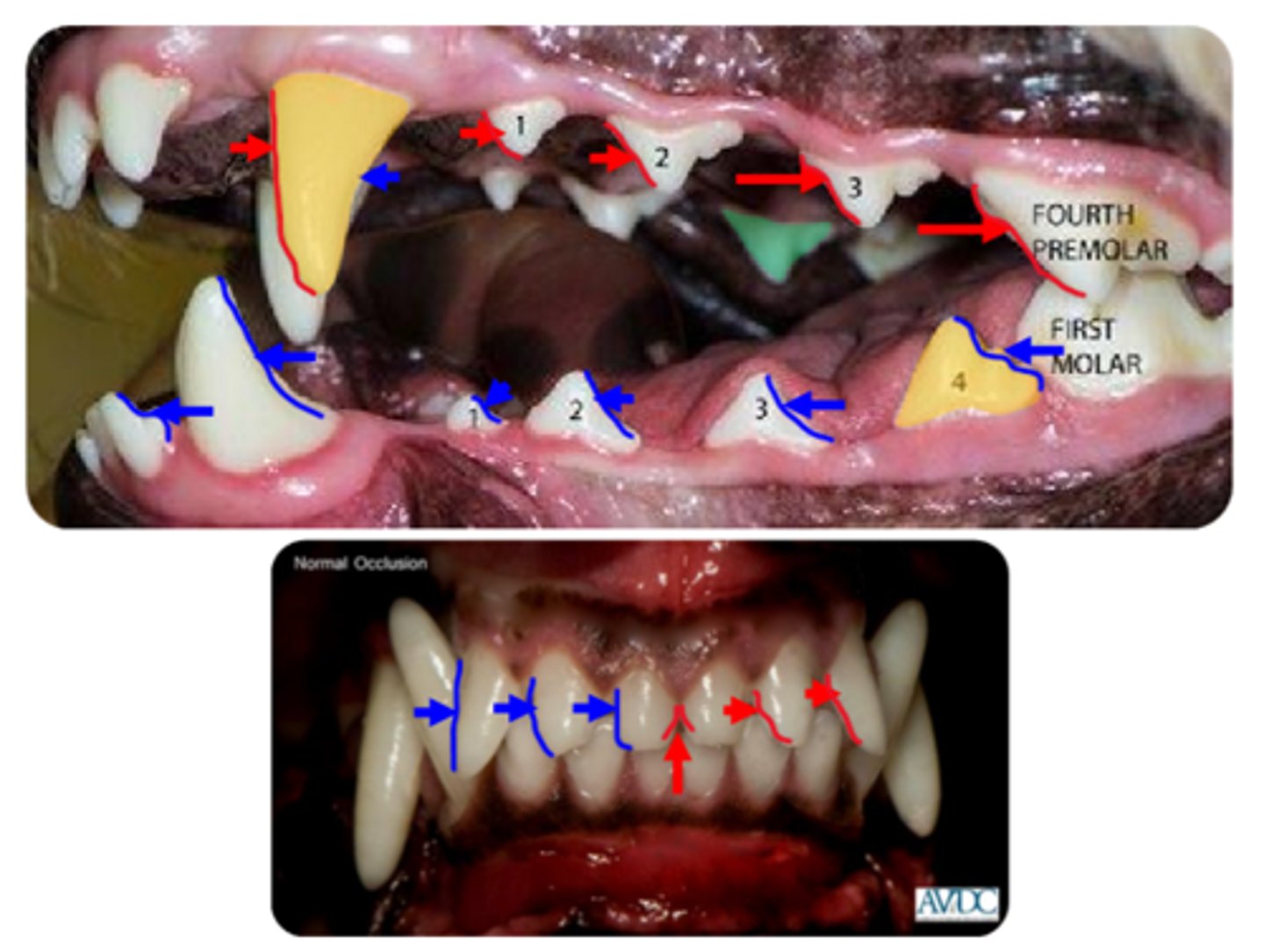
1
- quadrant
- L
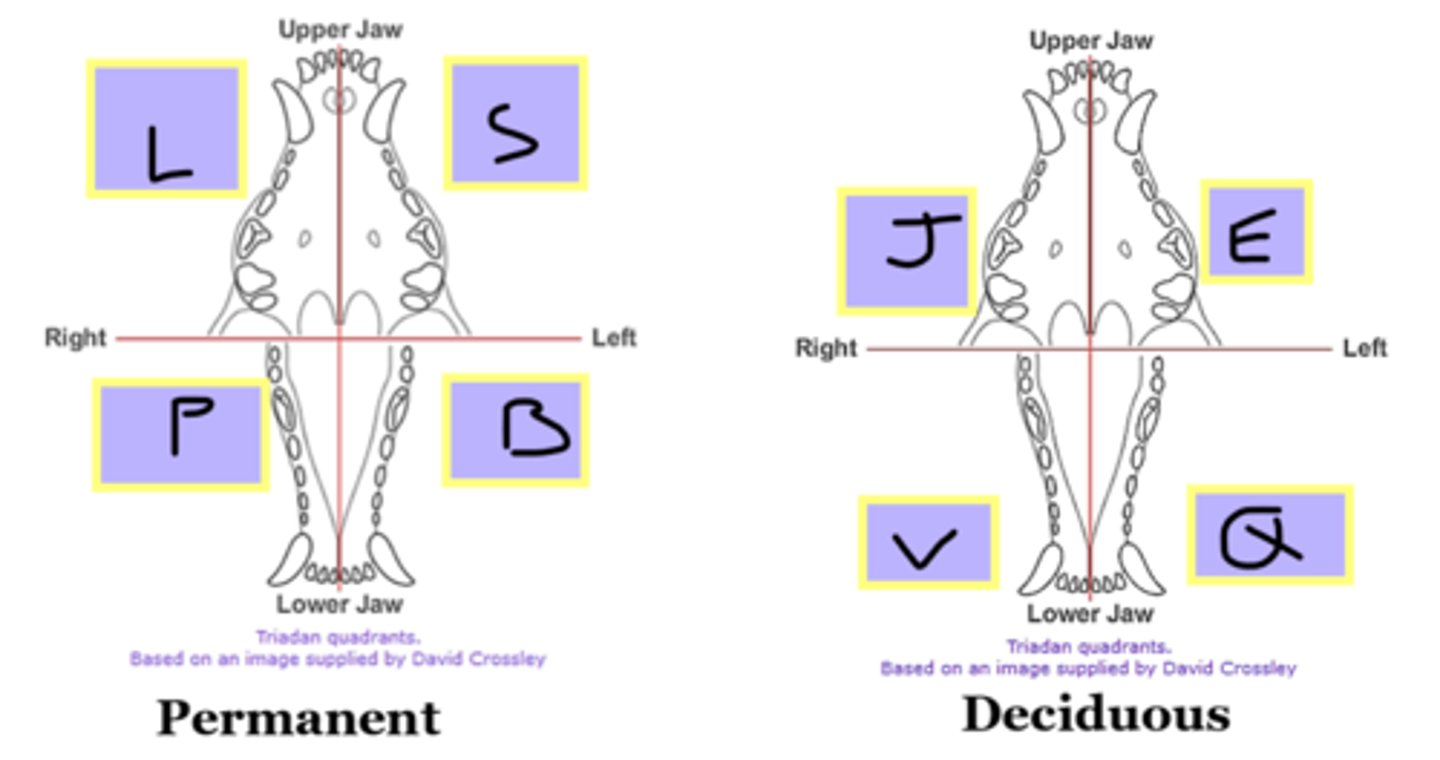
2
- quadrant
- S

3
- quadrant
- B
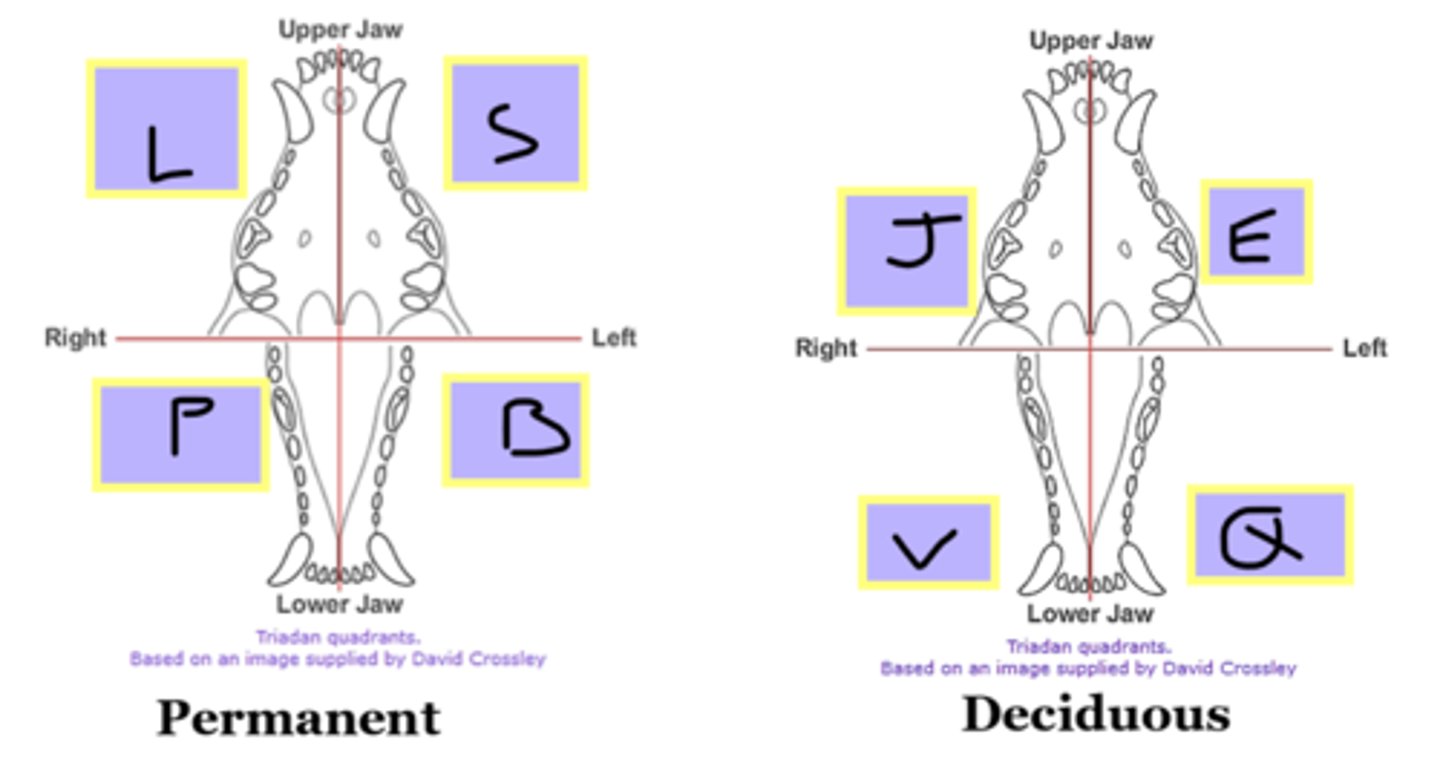
4
- quadrant
- P
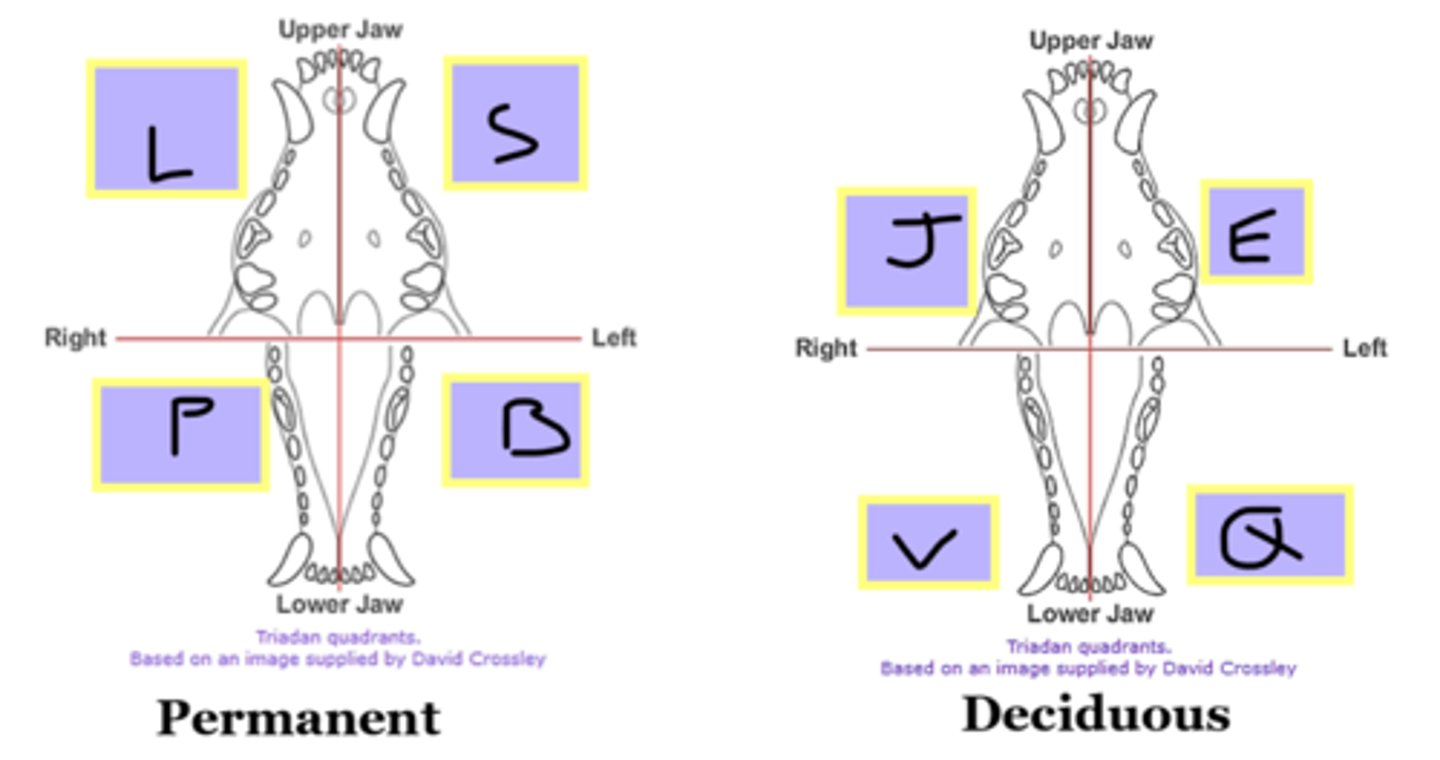
5
- quadrant
- J

6
- quadrant
- E
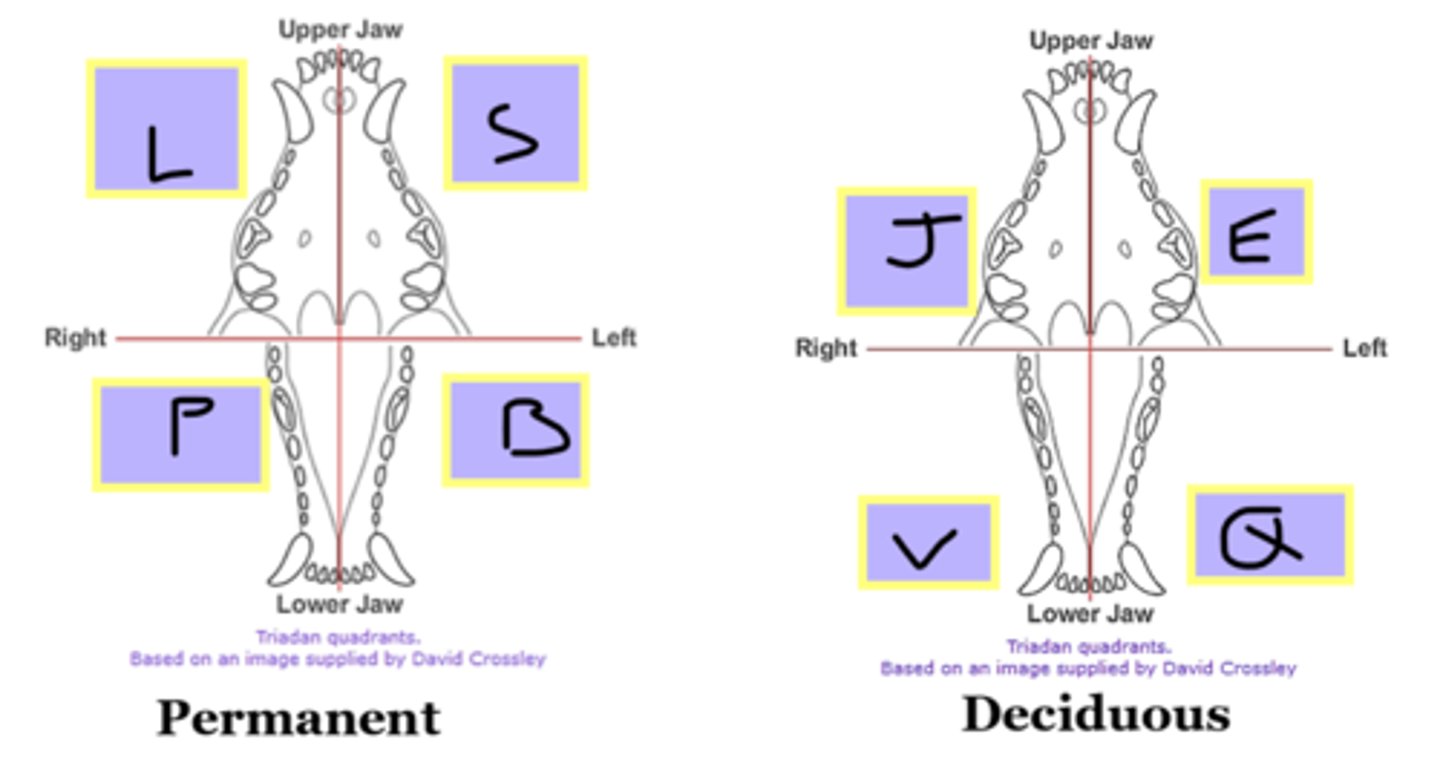
7
- quadrant
- Q

8
- quadrant
- V

infraorbital nerve
- 6

inferior alveolar nerve
- 19
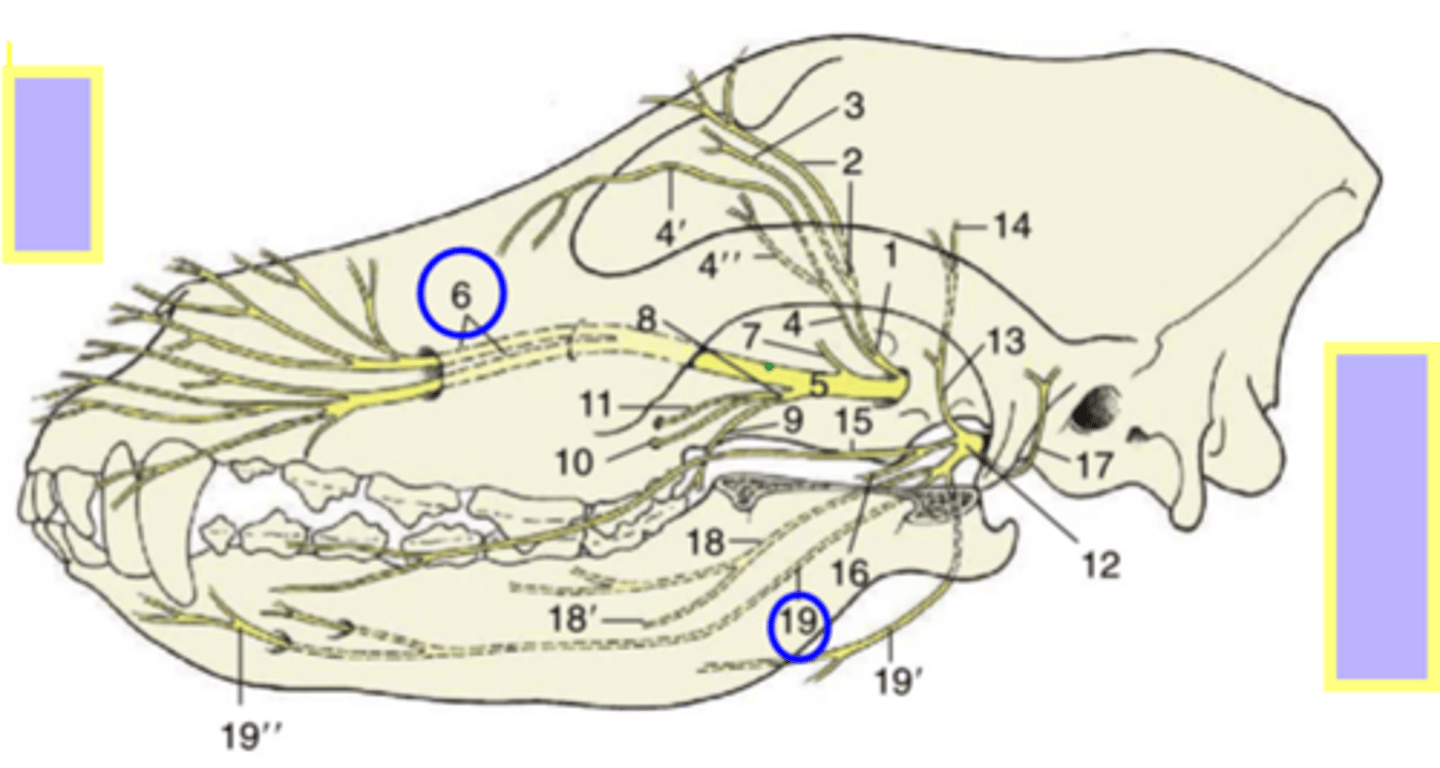
rostral maxillary block
Nerve blocks for dental procedures:
- A

caudal maxillary block
Nerve blocks for dental procedures:
- B
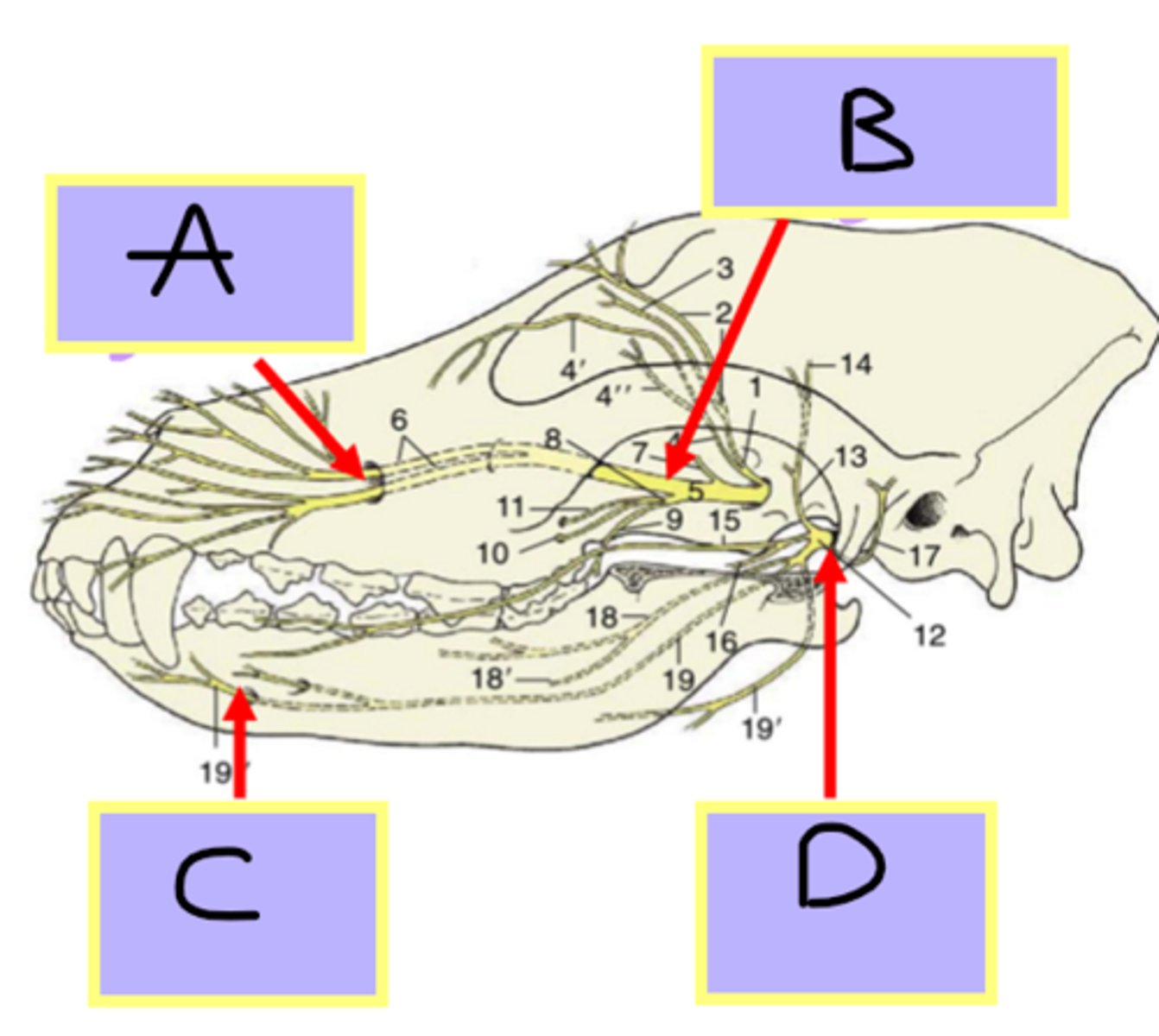
rostral mandibular block
Nerve blocks for dental procedures:
- C
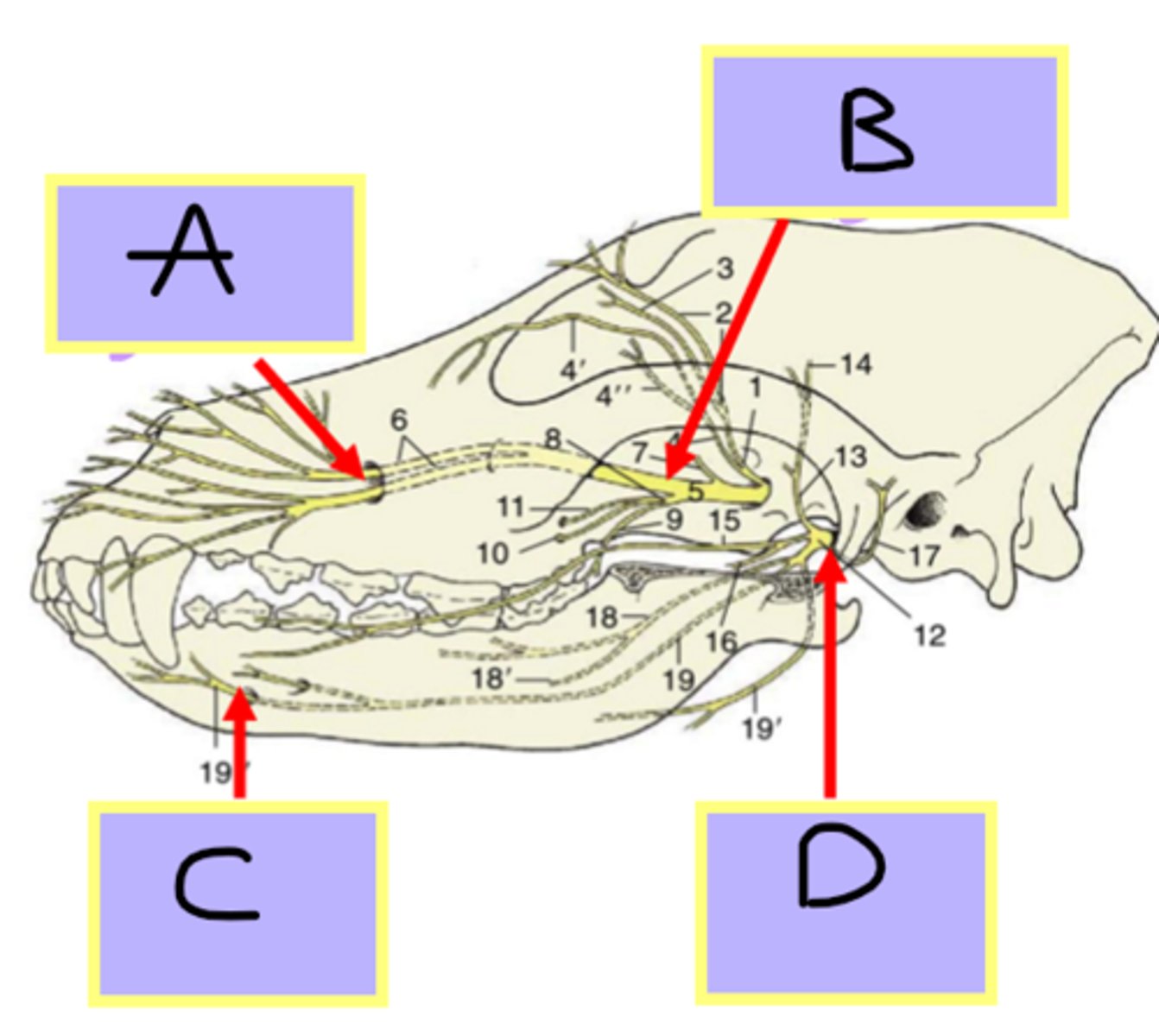
caudal mandibular block
Nerve blocks for dental procedures:
- D

temporalis muscle
- 1
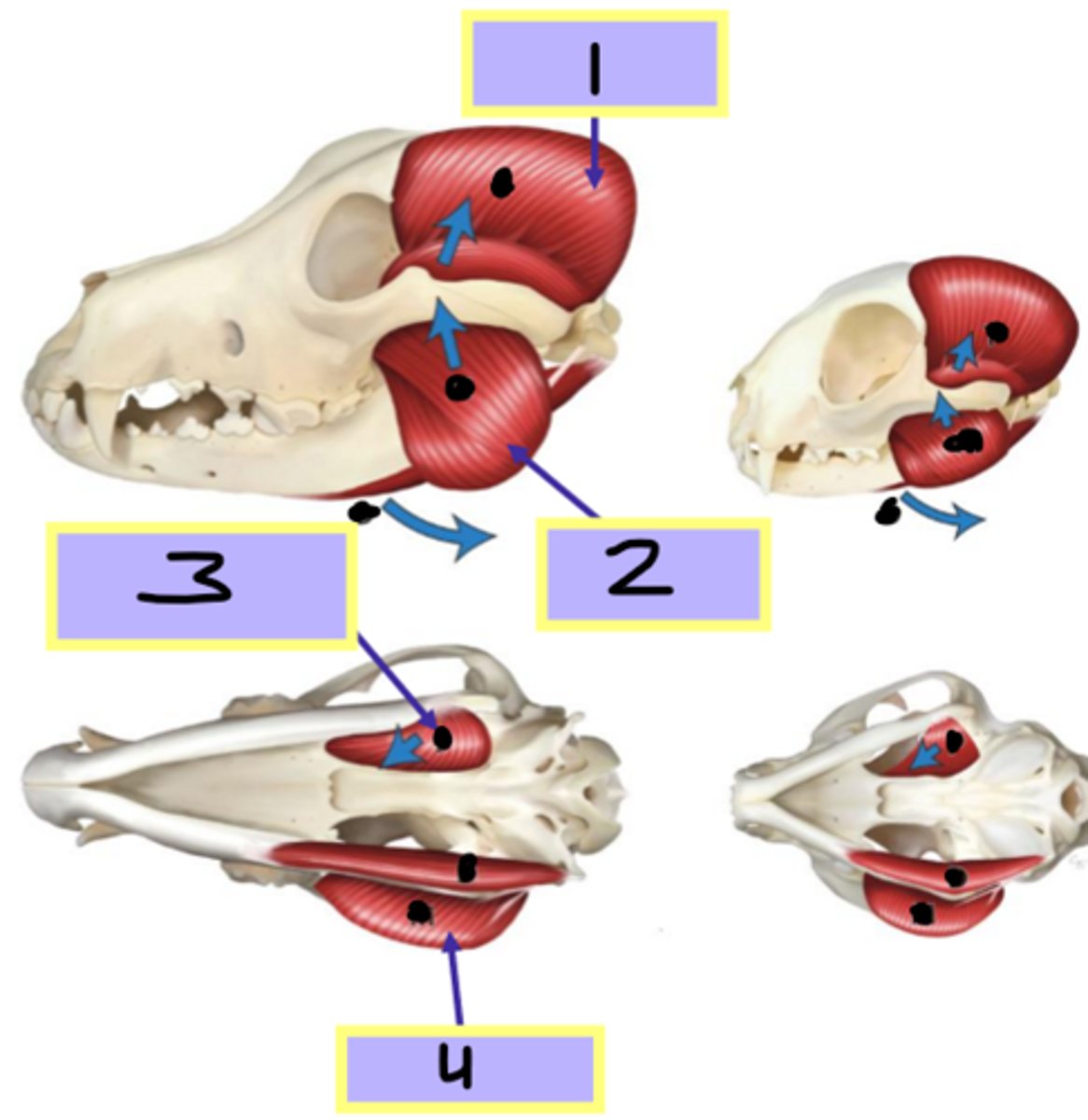
temporalis muscle
- 1
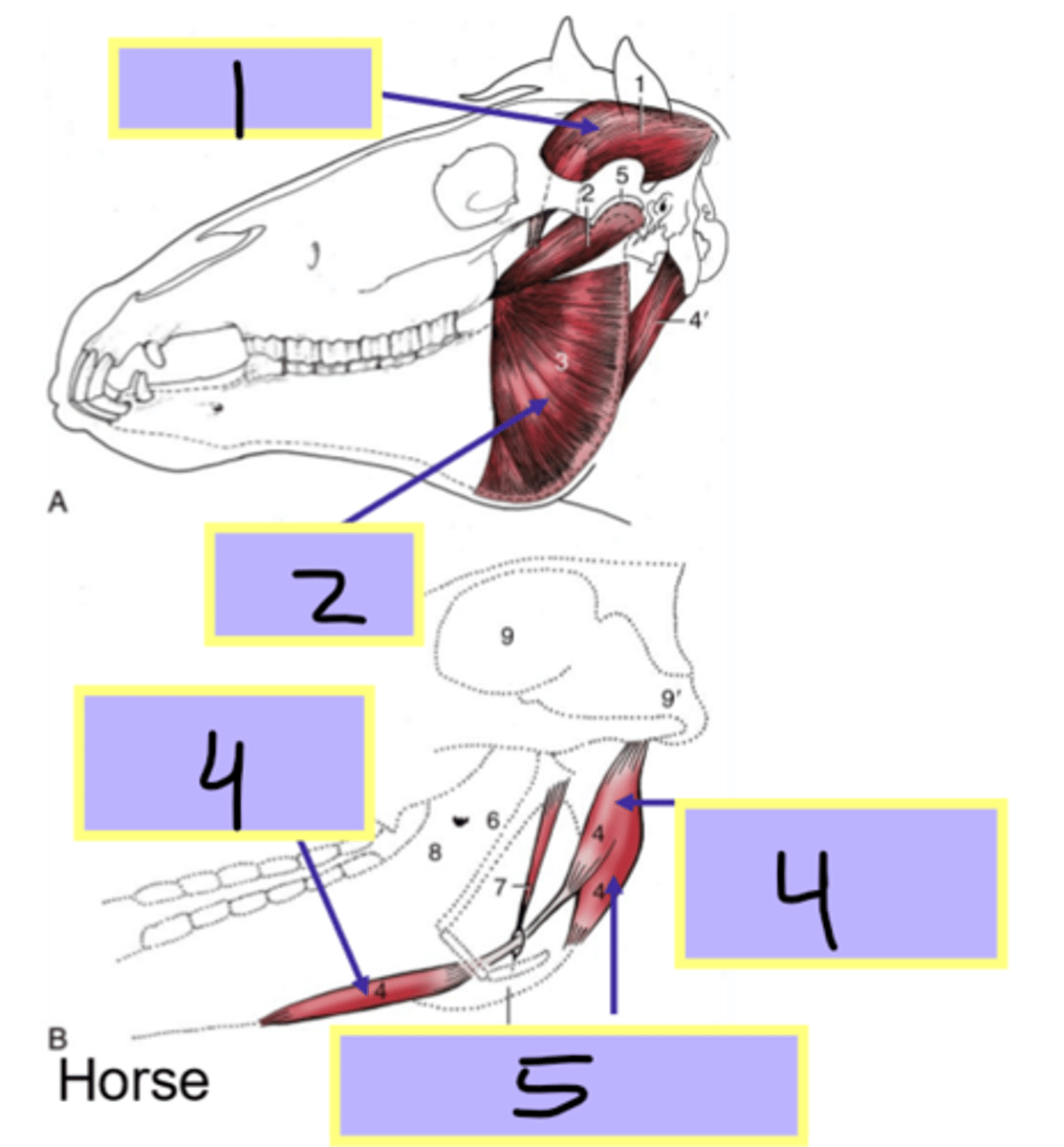
masseter muscle
- 2

masseter muscle
- 2
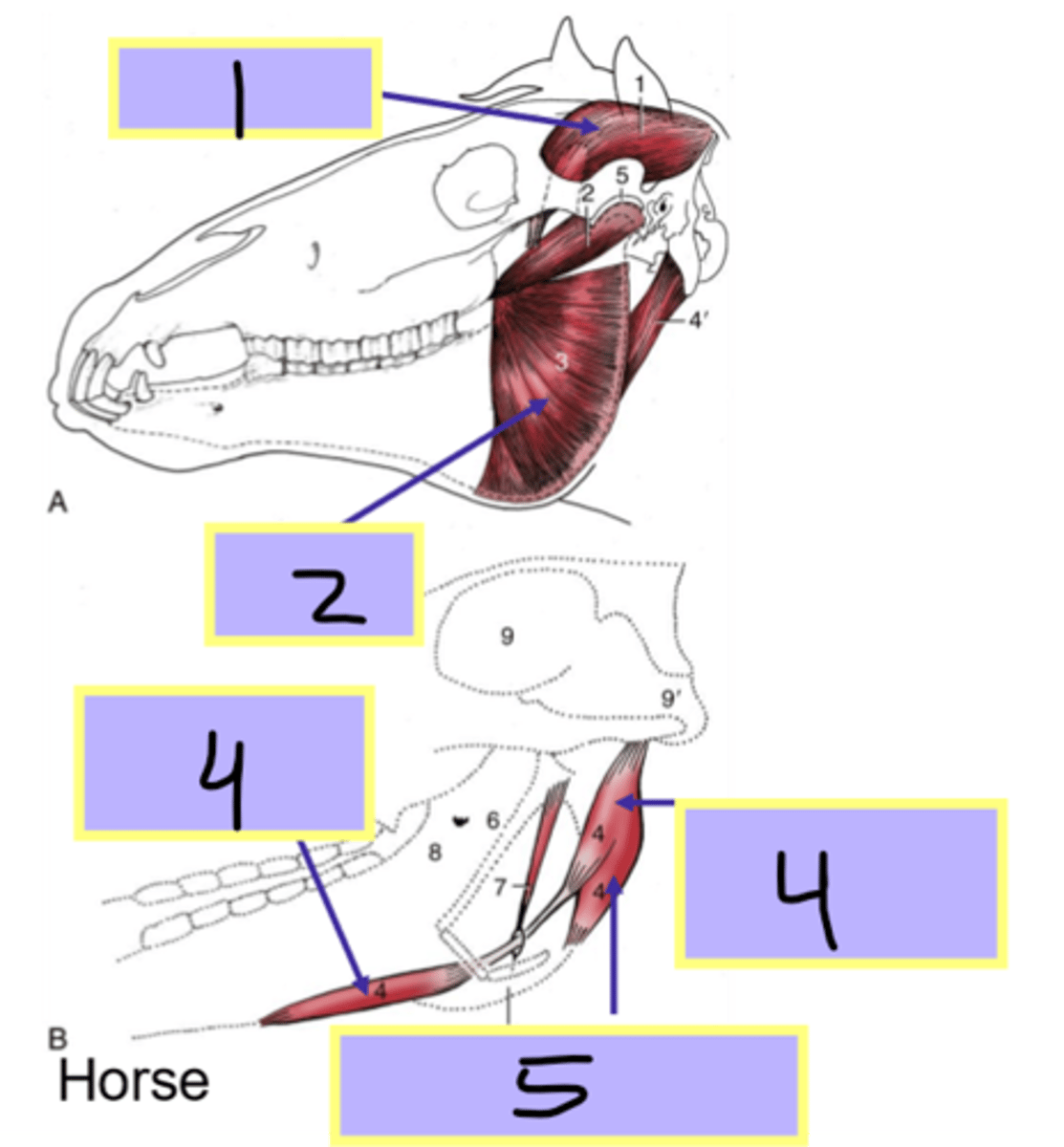
pterygoideus
- 3
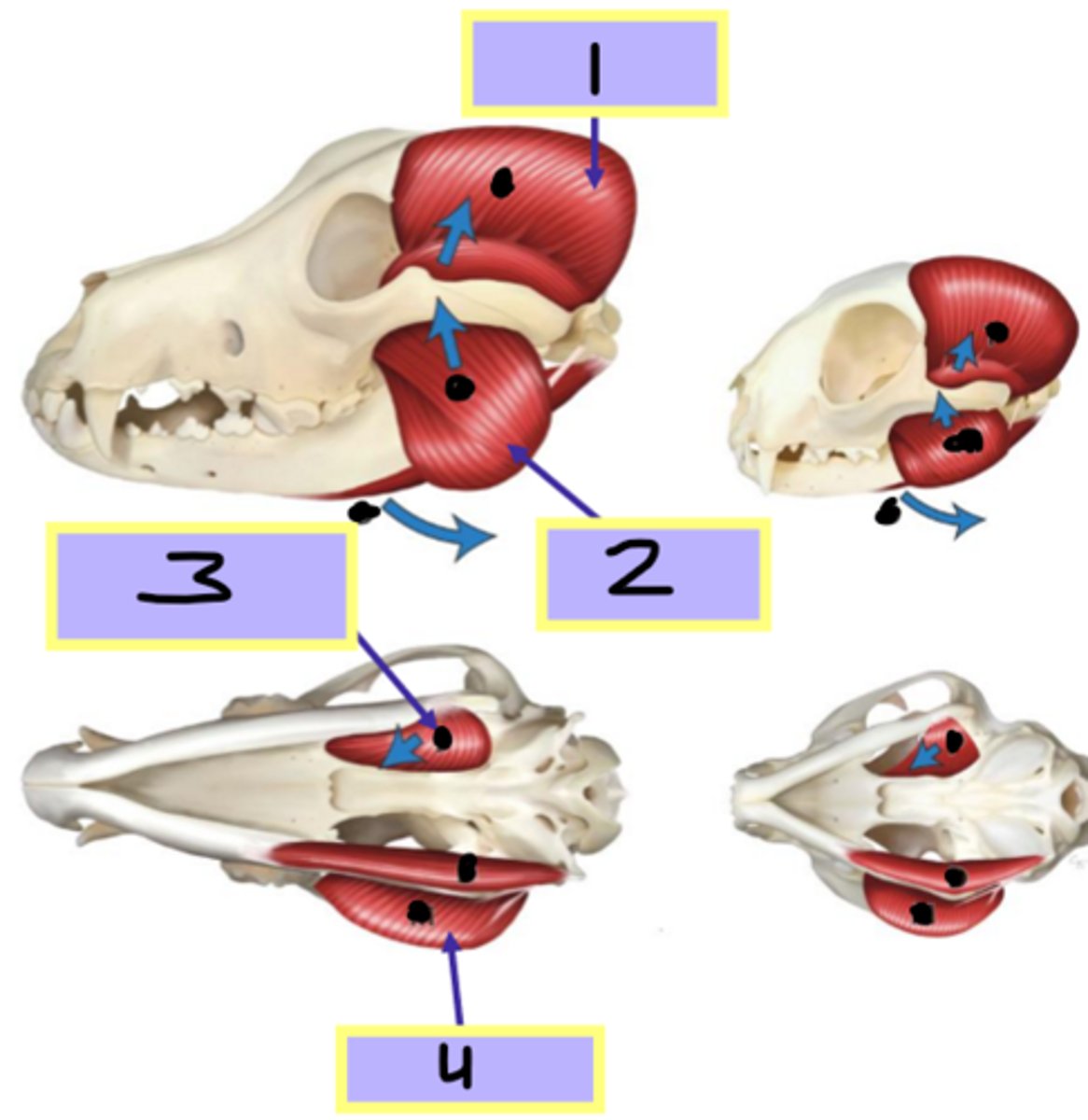
digastricus
- 4
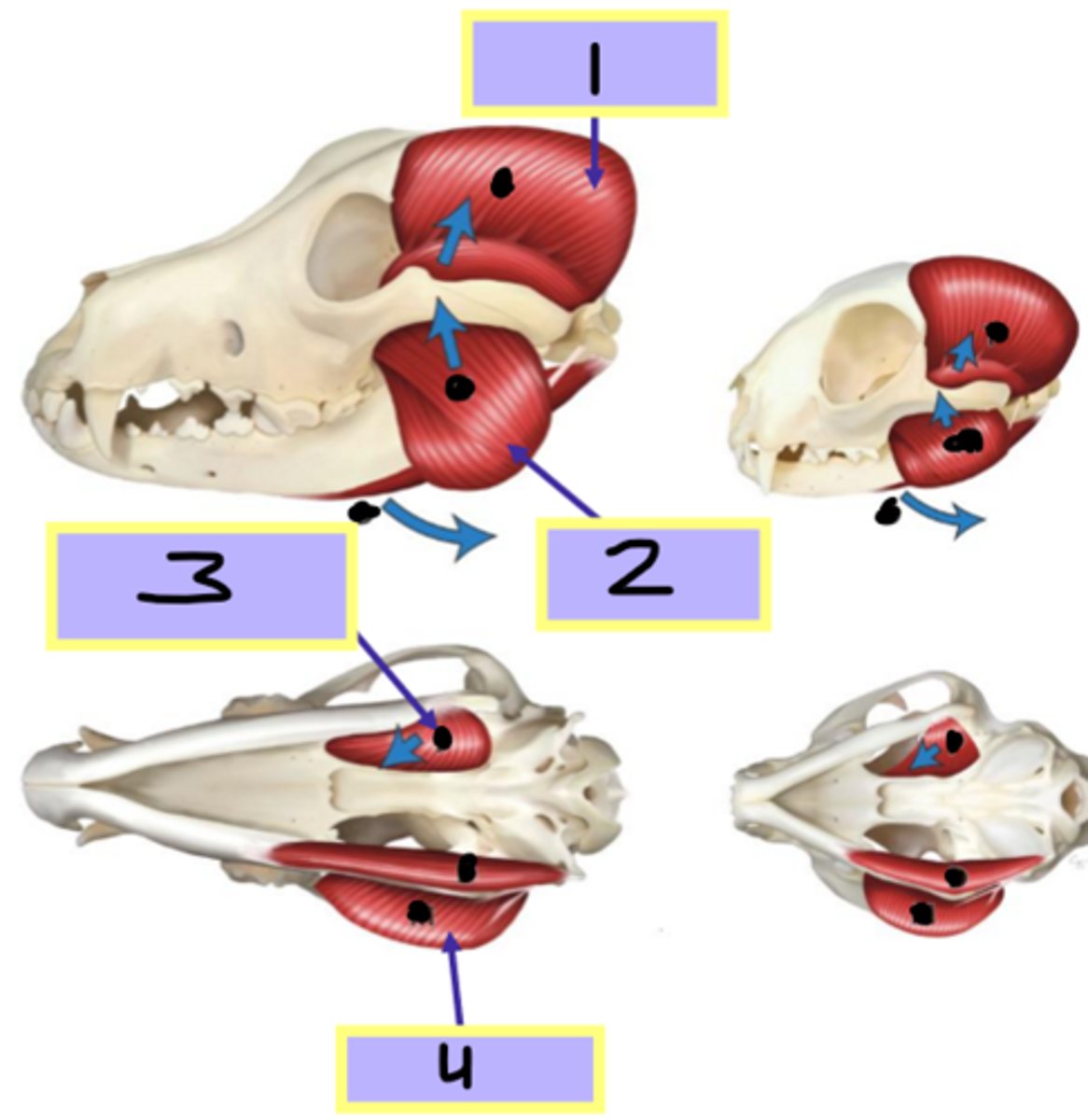
digastricus
- 4

mandibular branch of the trigeminal nerve
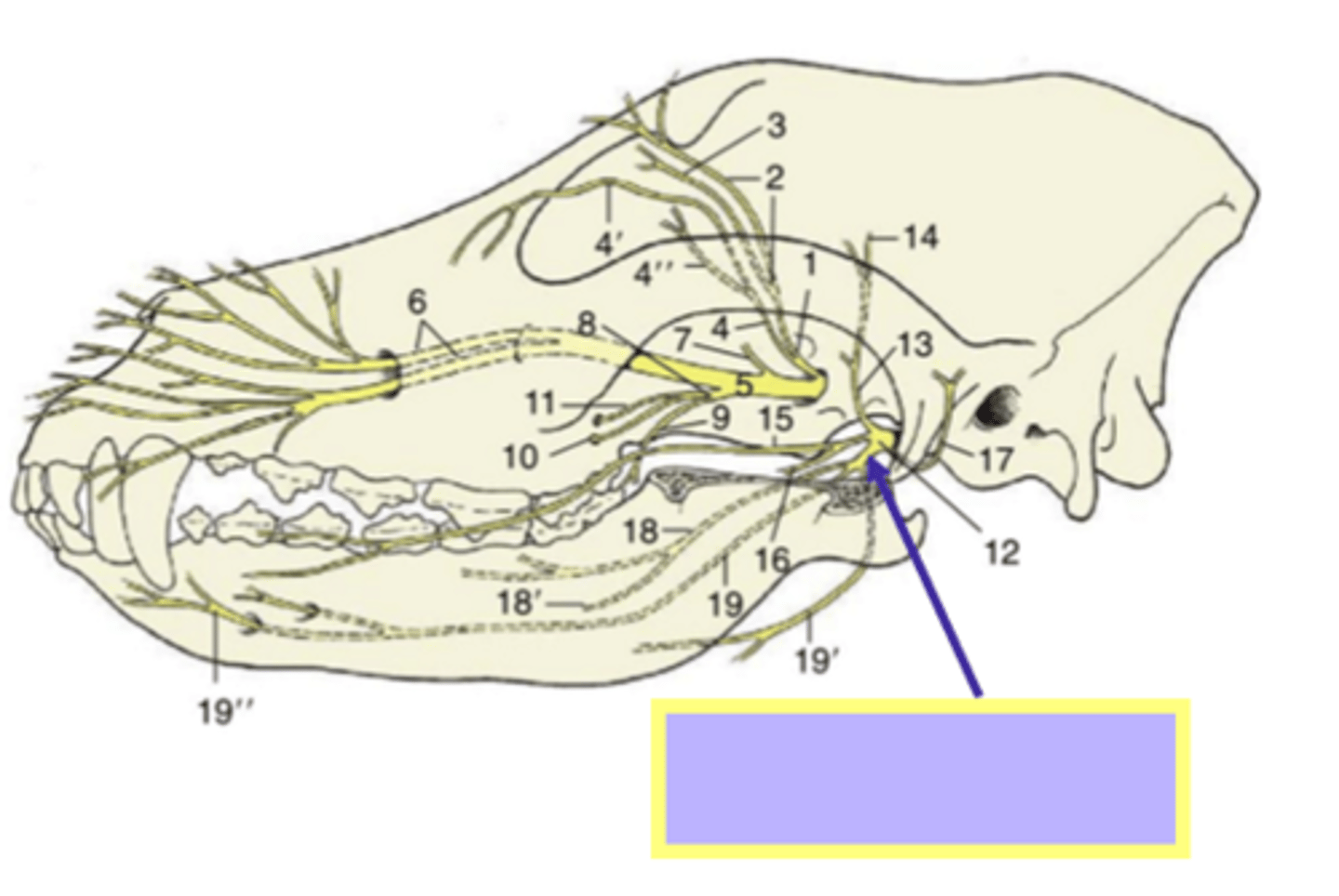
occipitomandibularis muscle
- 5
- special horse thing
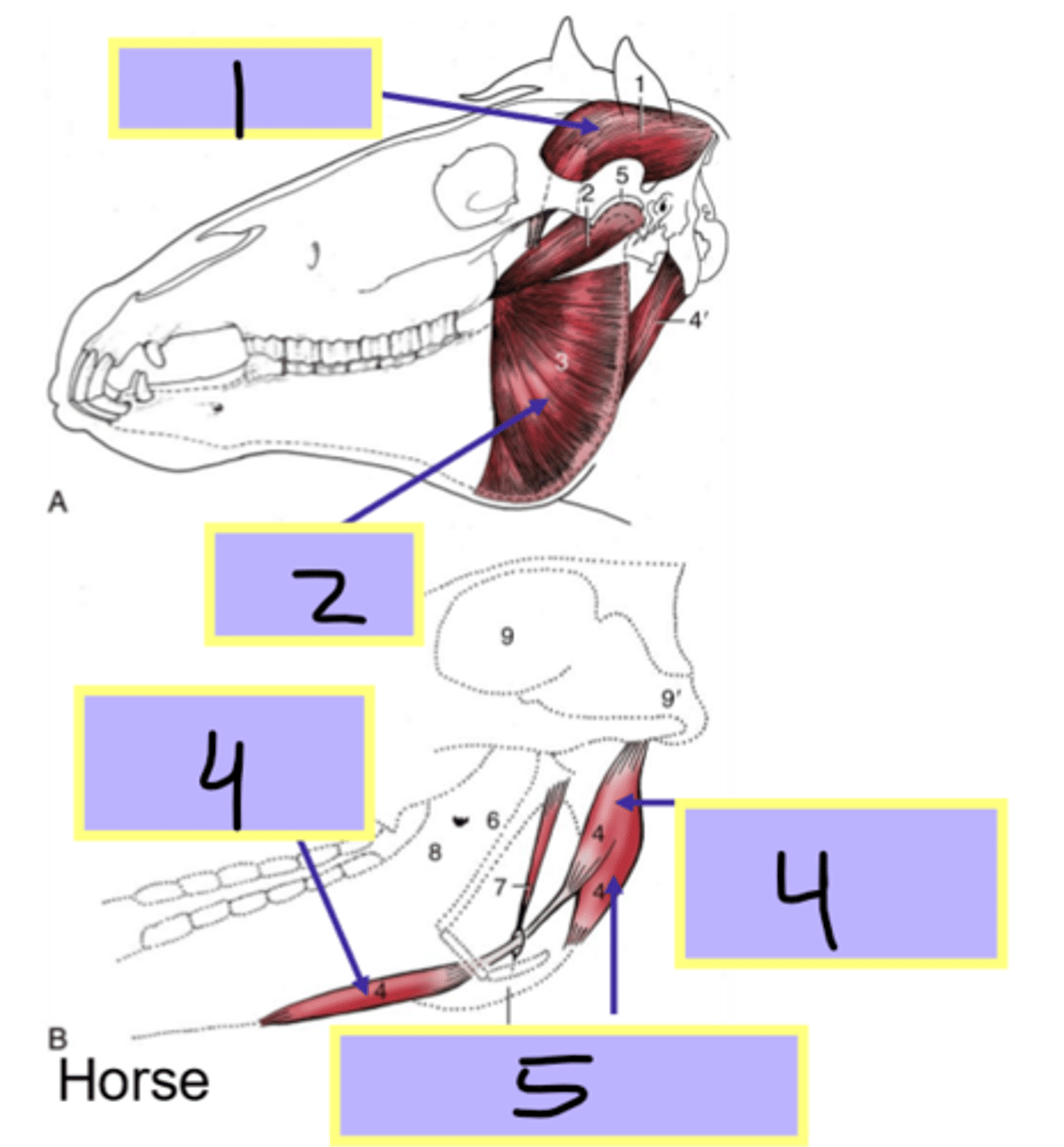
6 days
central deciduous teeth erupt at _________________

6 weeks
intermediate deciduous teeth erupt at ____________

6 months
corner deciduous teeth erupt at __________
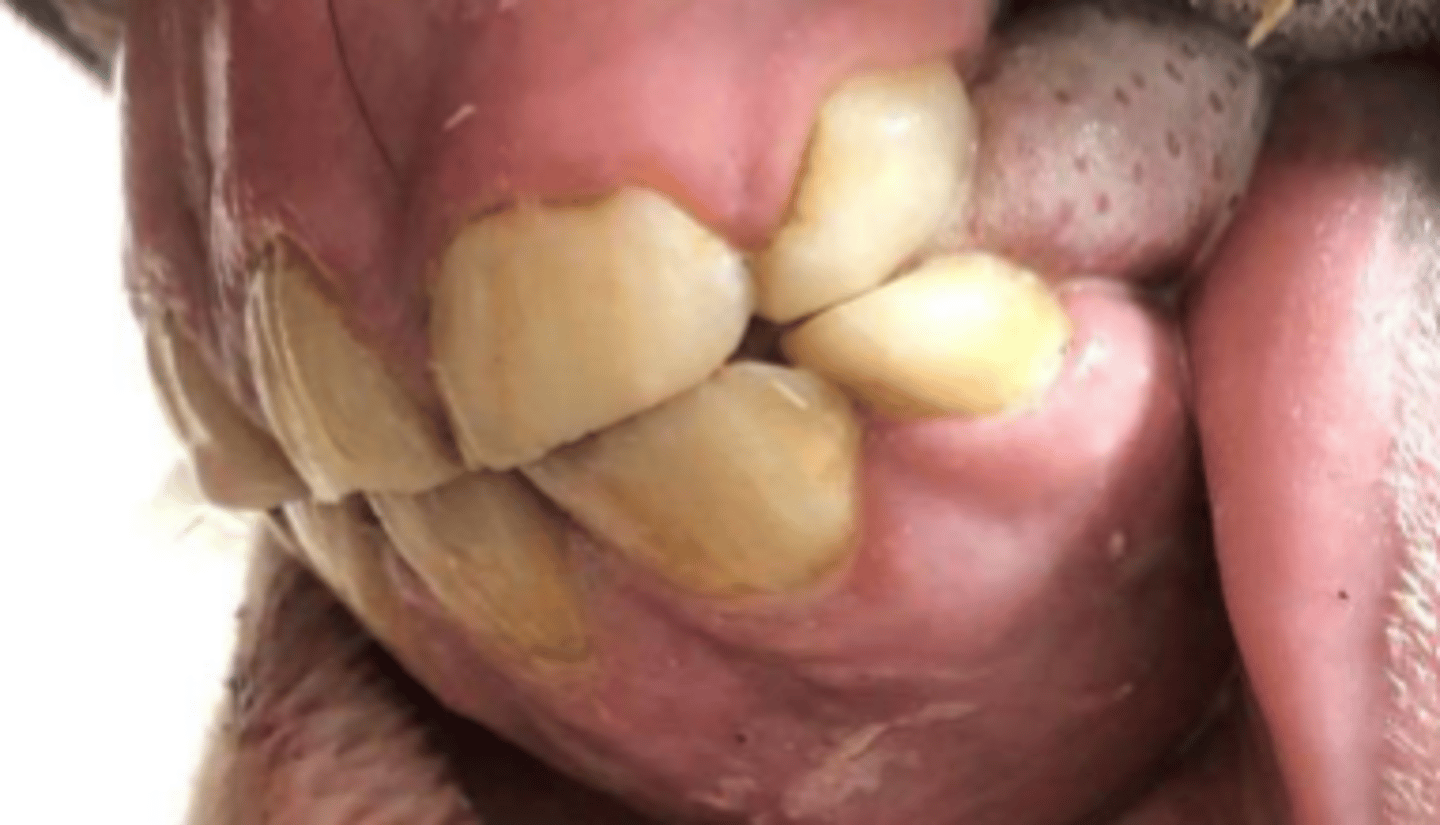
diastema
gap where bit sits
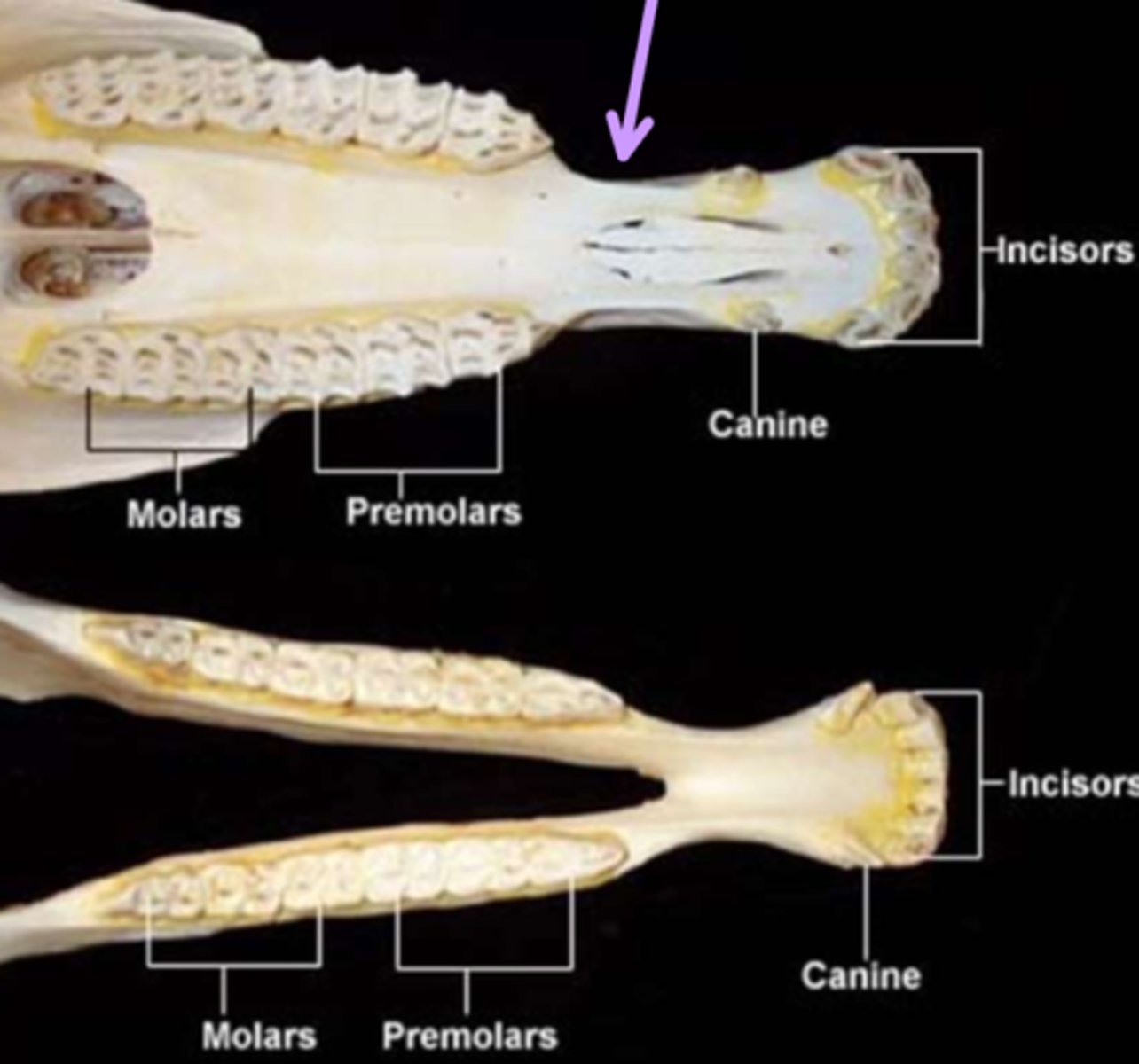
deciduous (wider than tall)
deciduous or permanent?
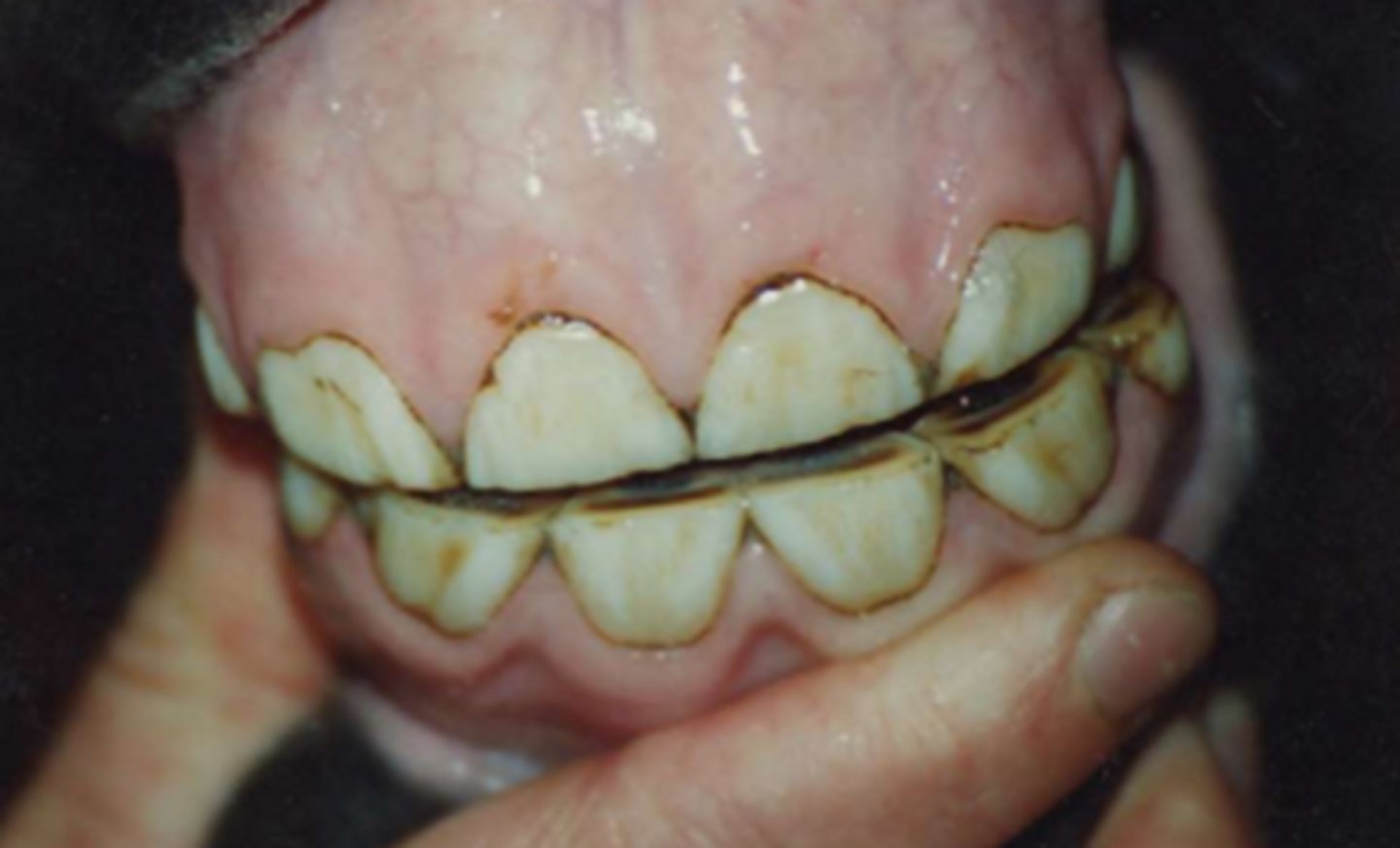
permanent (taller than wide)
deciduous or permanent?
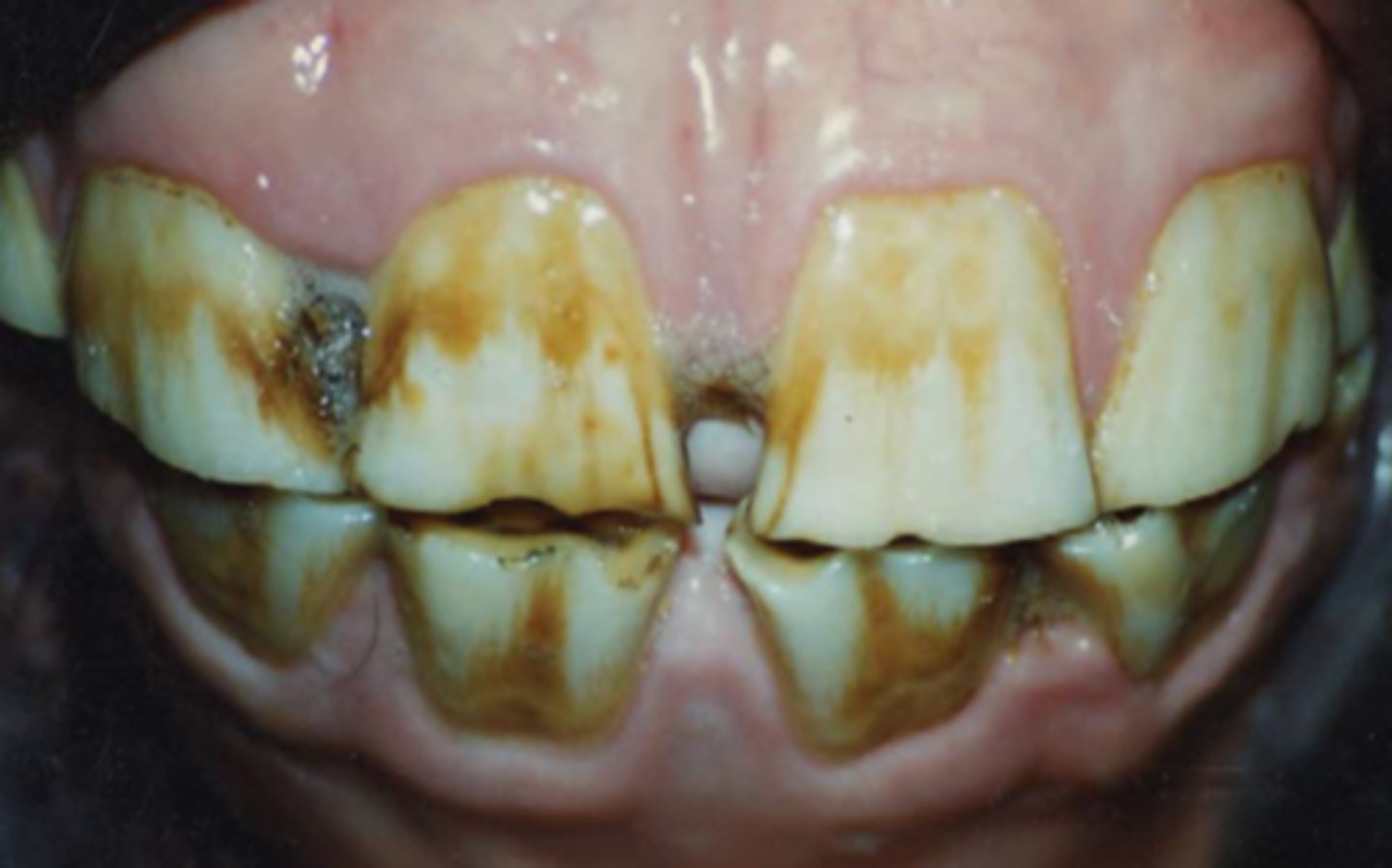
infundibulum (cup)
1

peripheral enamel
2
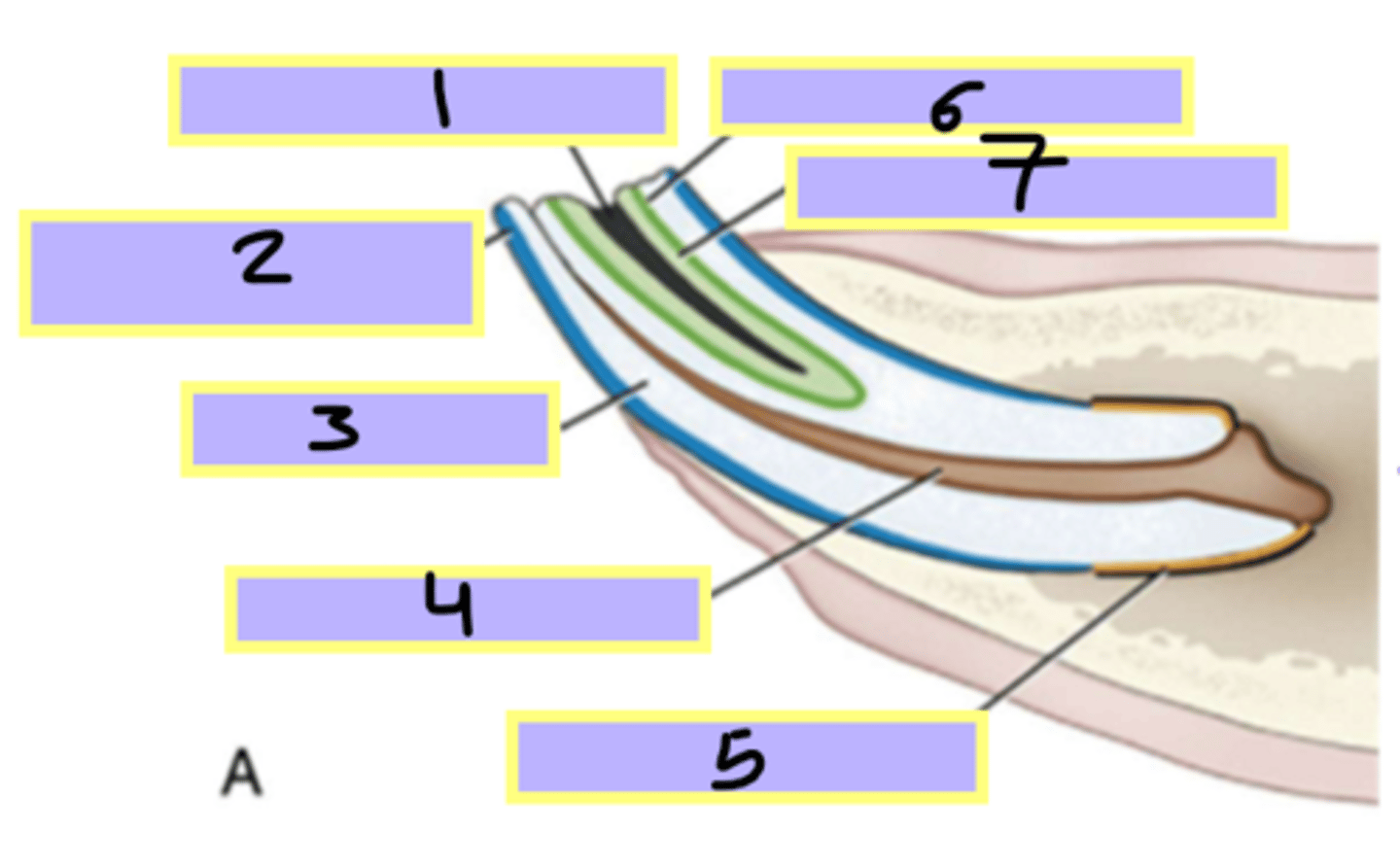
primary dentin
3
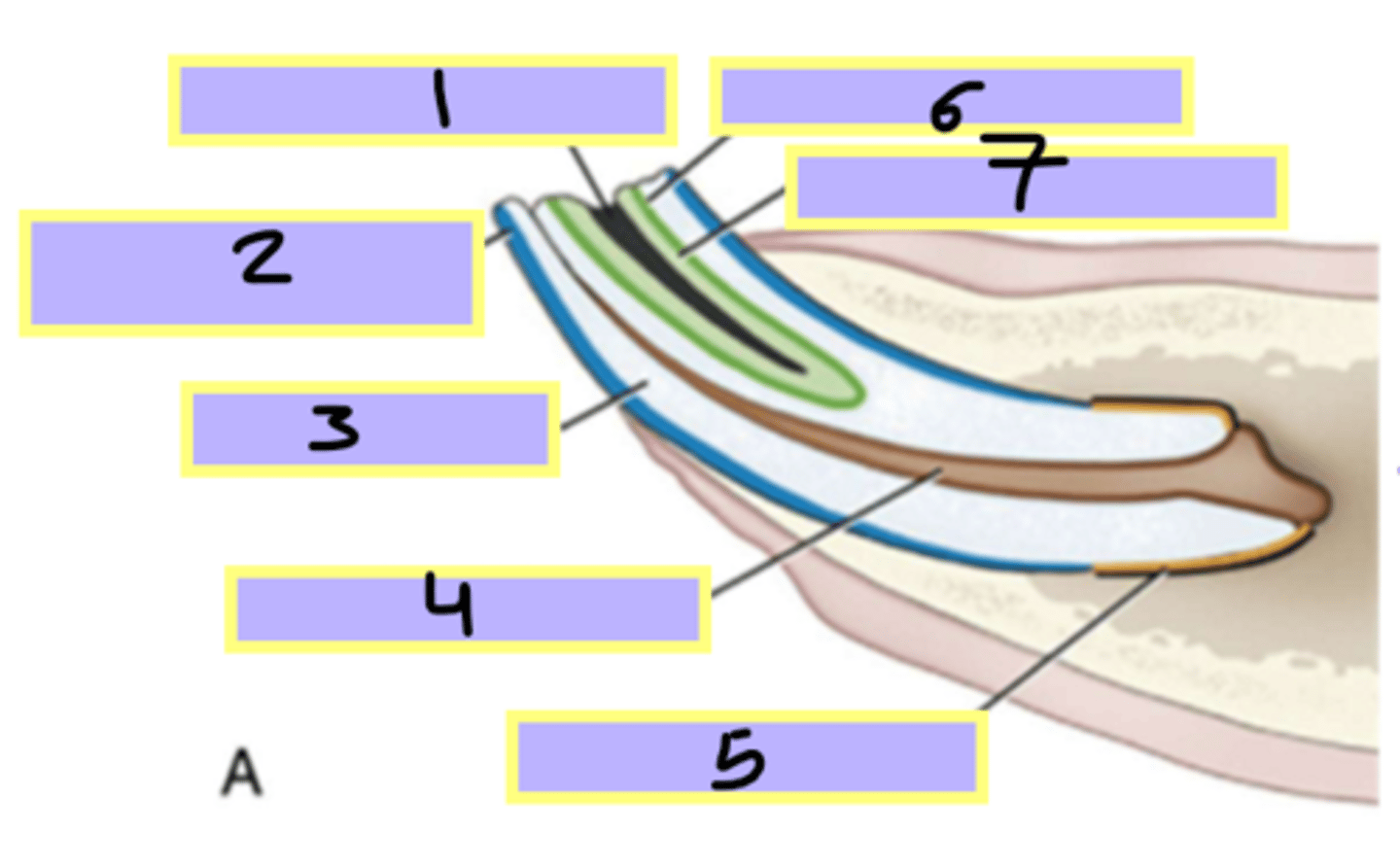
pulp cavity
4
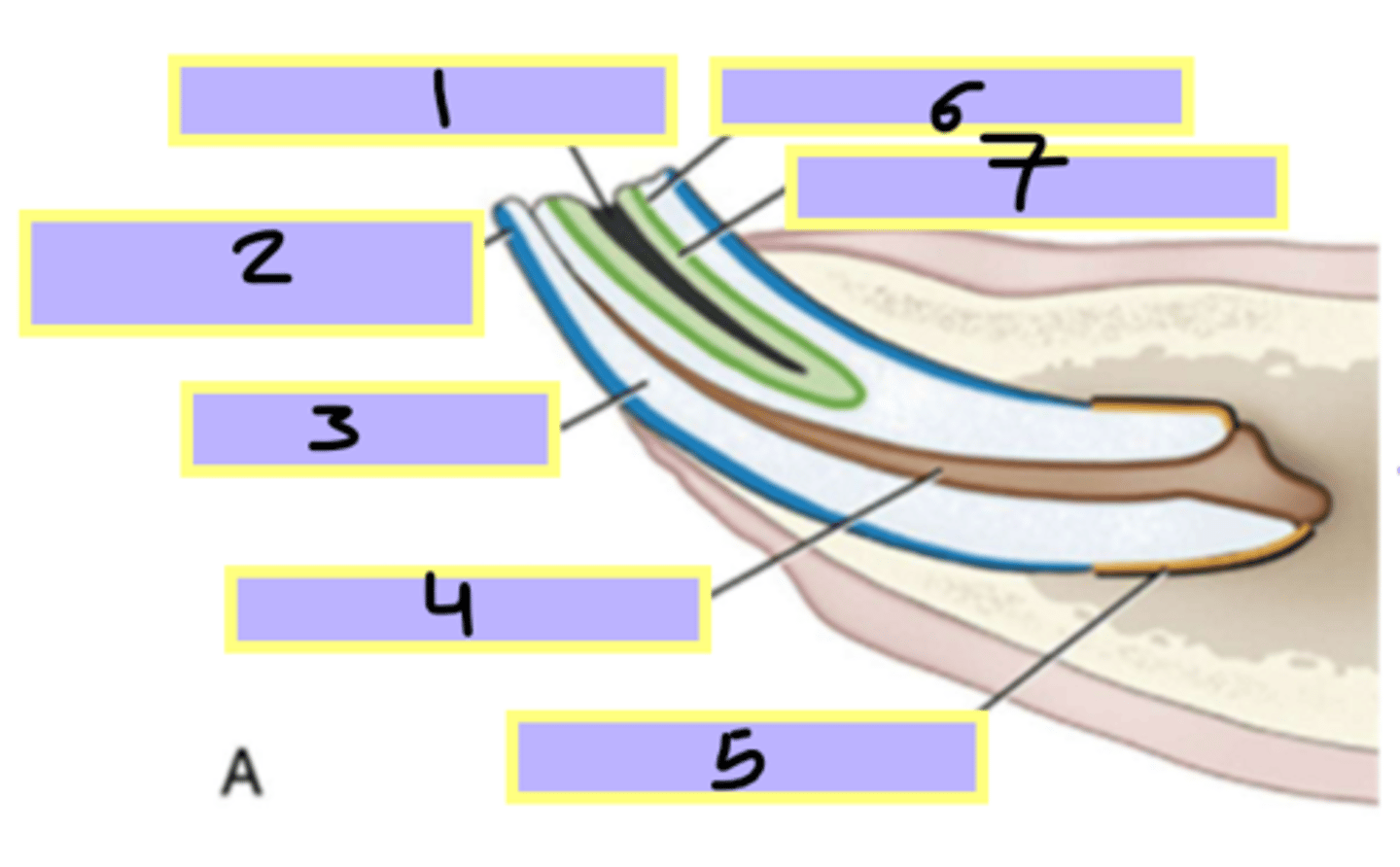
peripheral cement
5
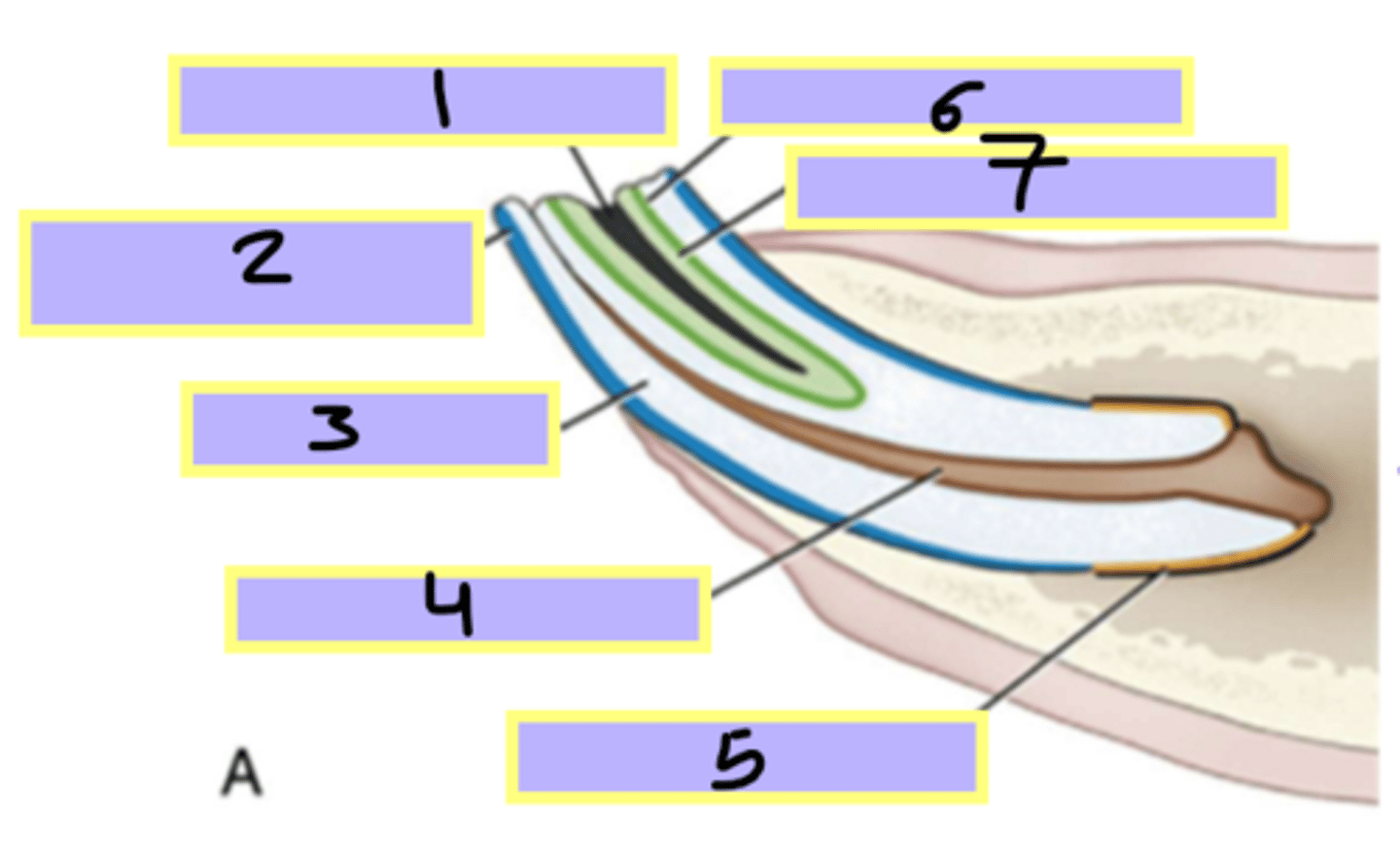
infundibular enamel
6

infundibular cement
7
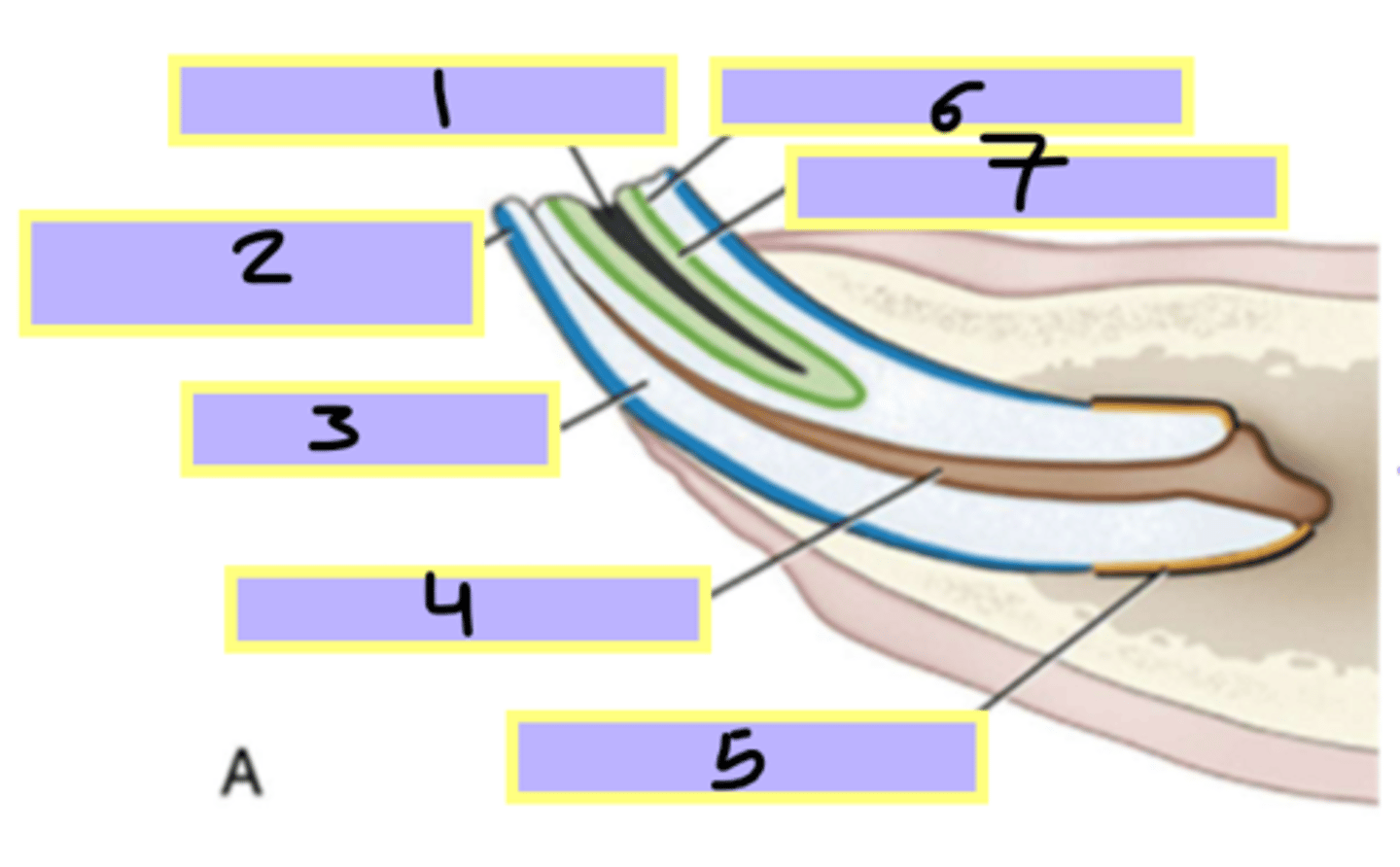
5 years
age

10 years
age

15 years
age

20 years
age

7 year hook
sometimes floated
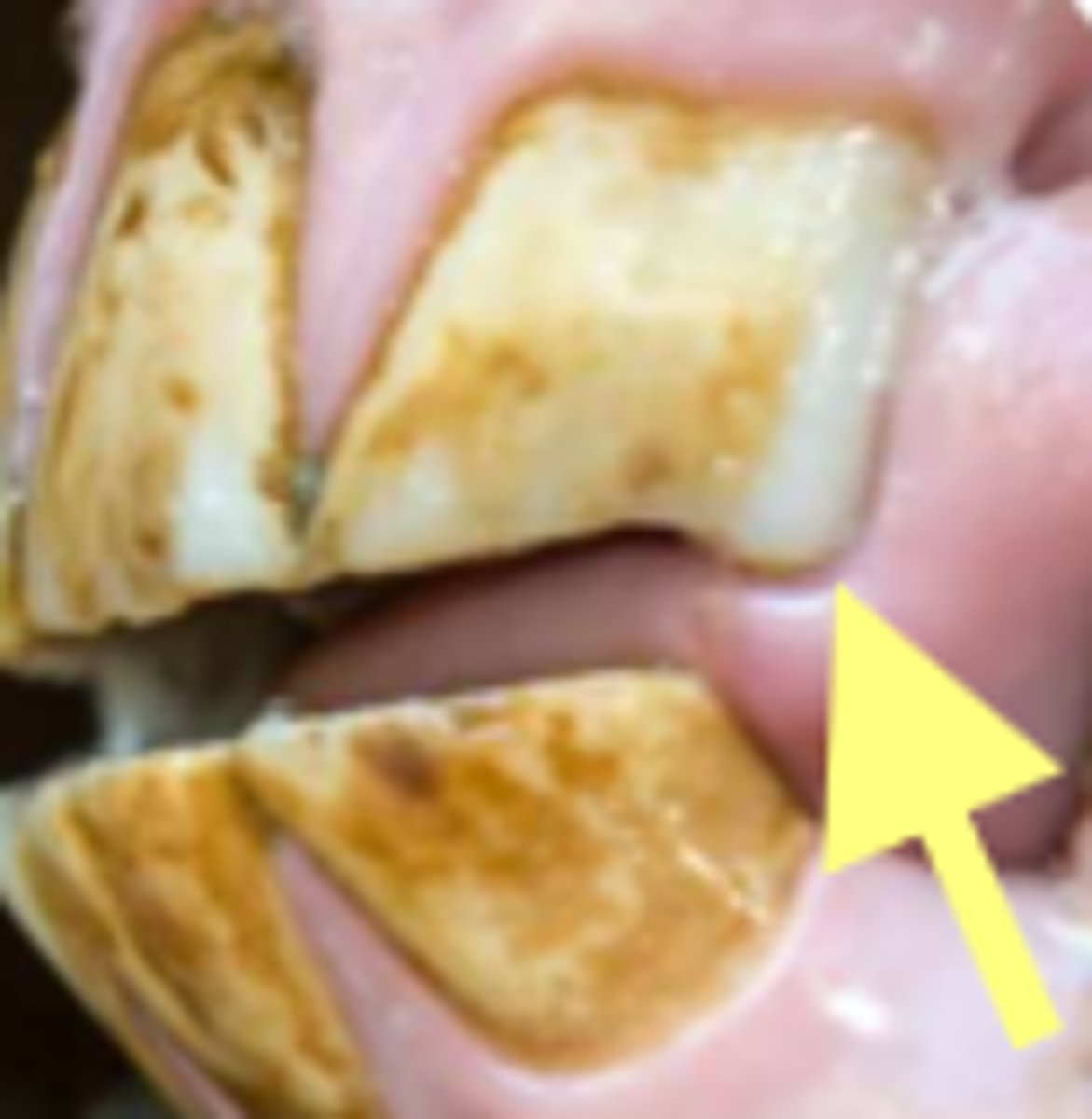
4 years
age
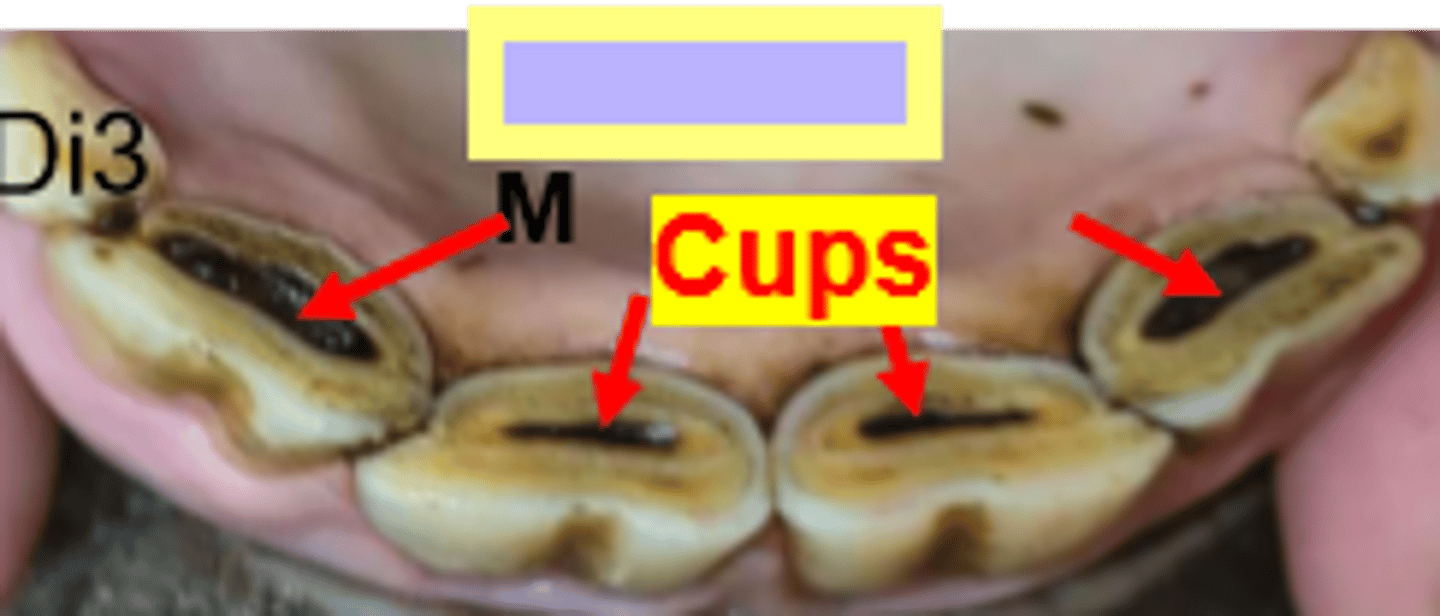
6 years
age
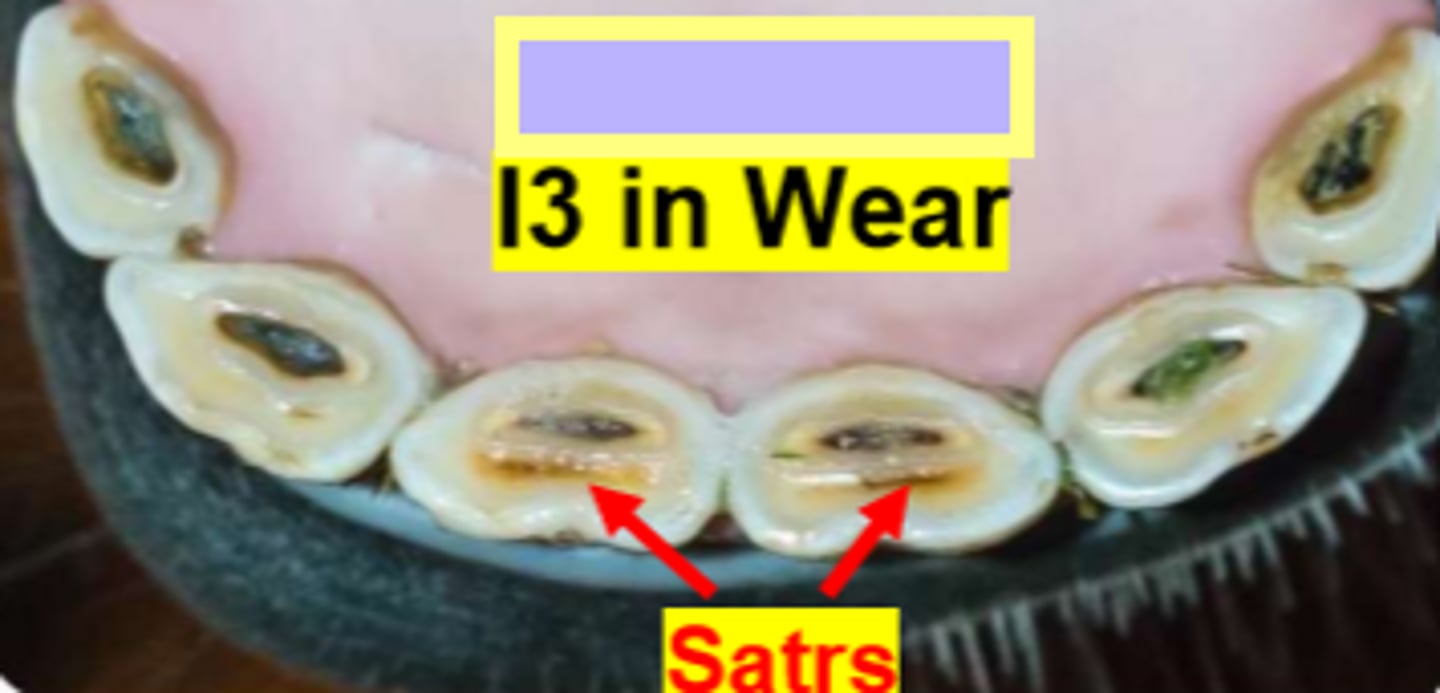
9 years
age

5-6 years
age
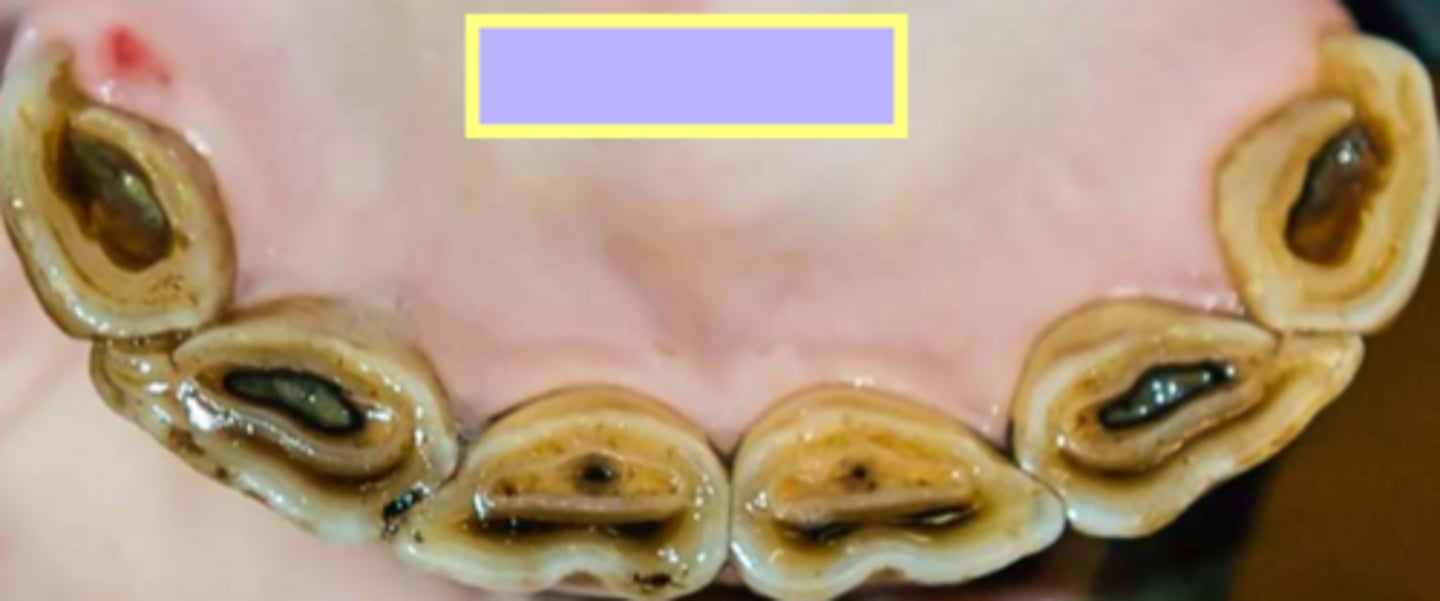
9 years
age

19 years
age

6 years
age
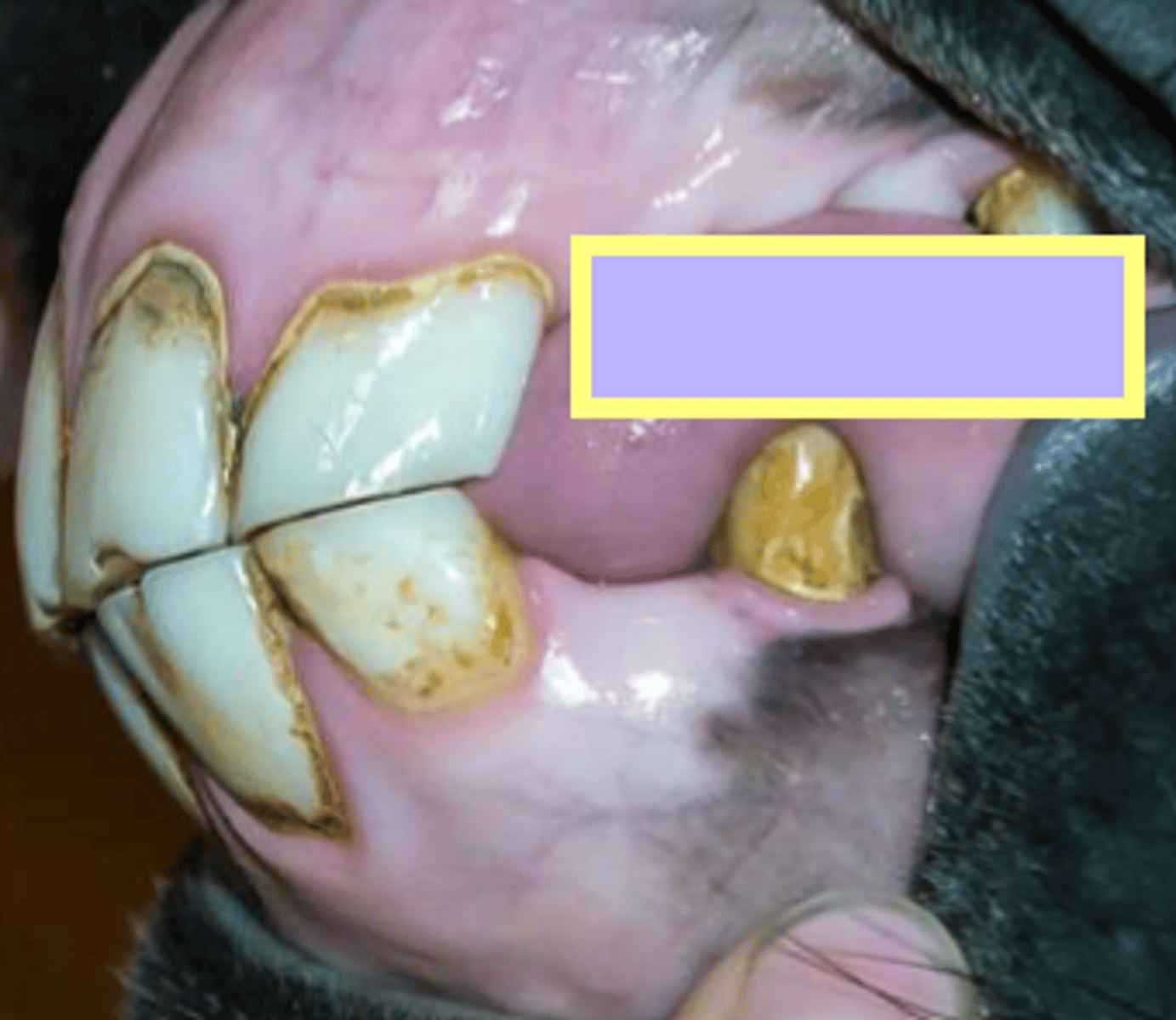
9 years
age
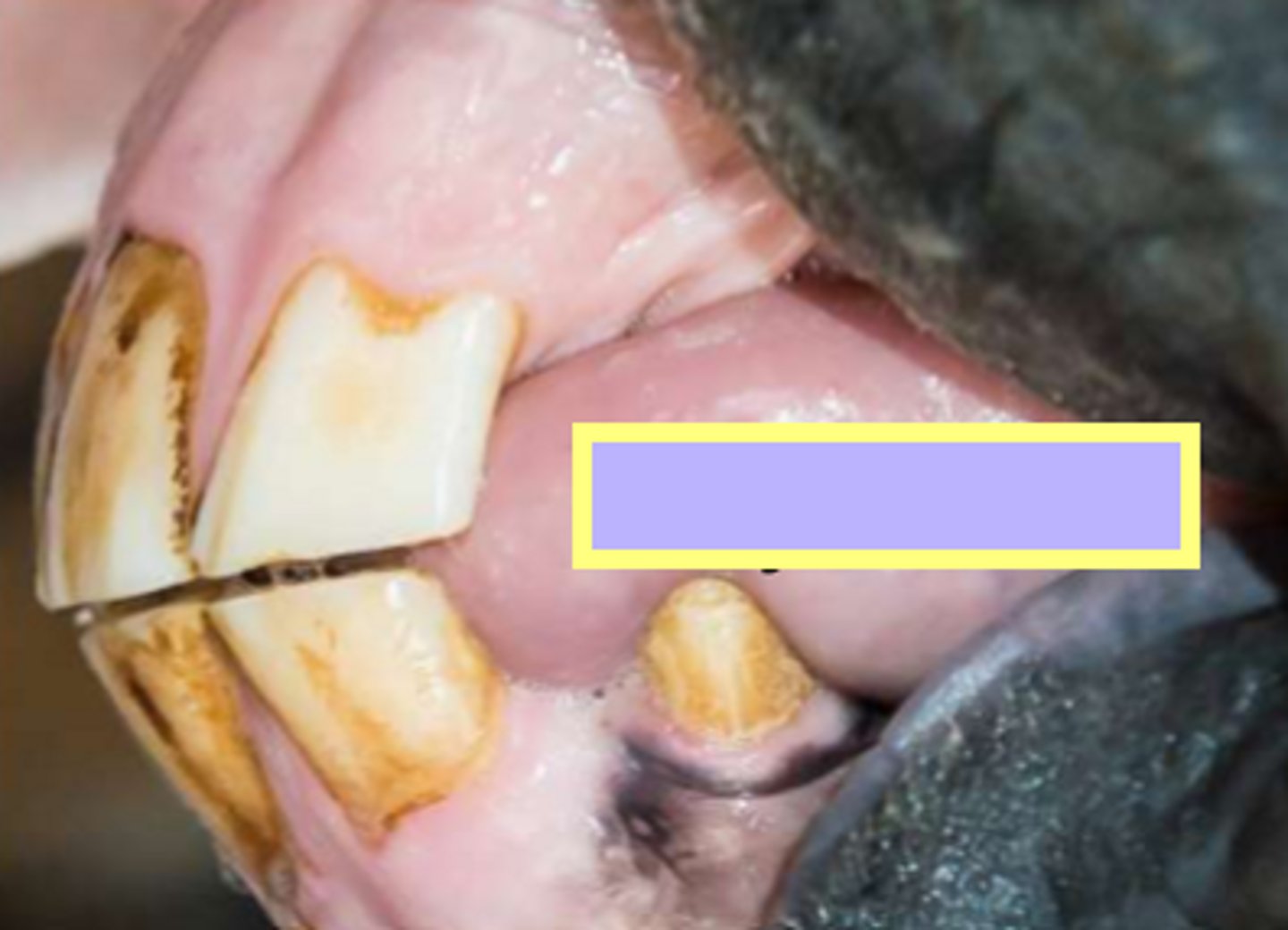
26 years
age
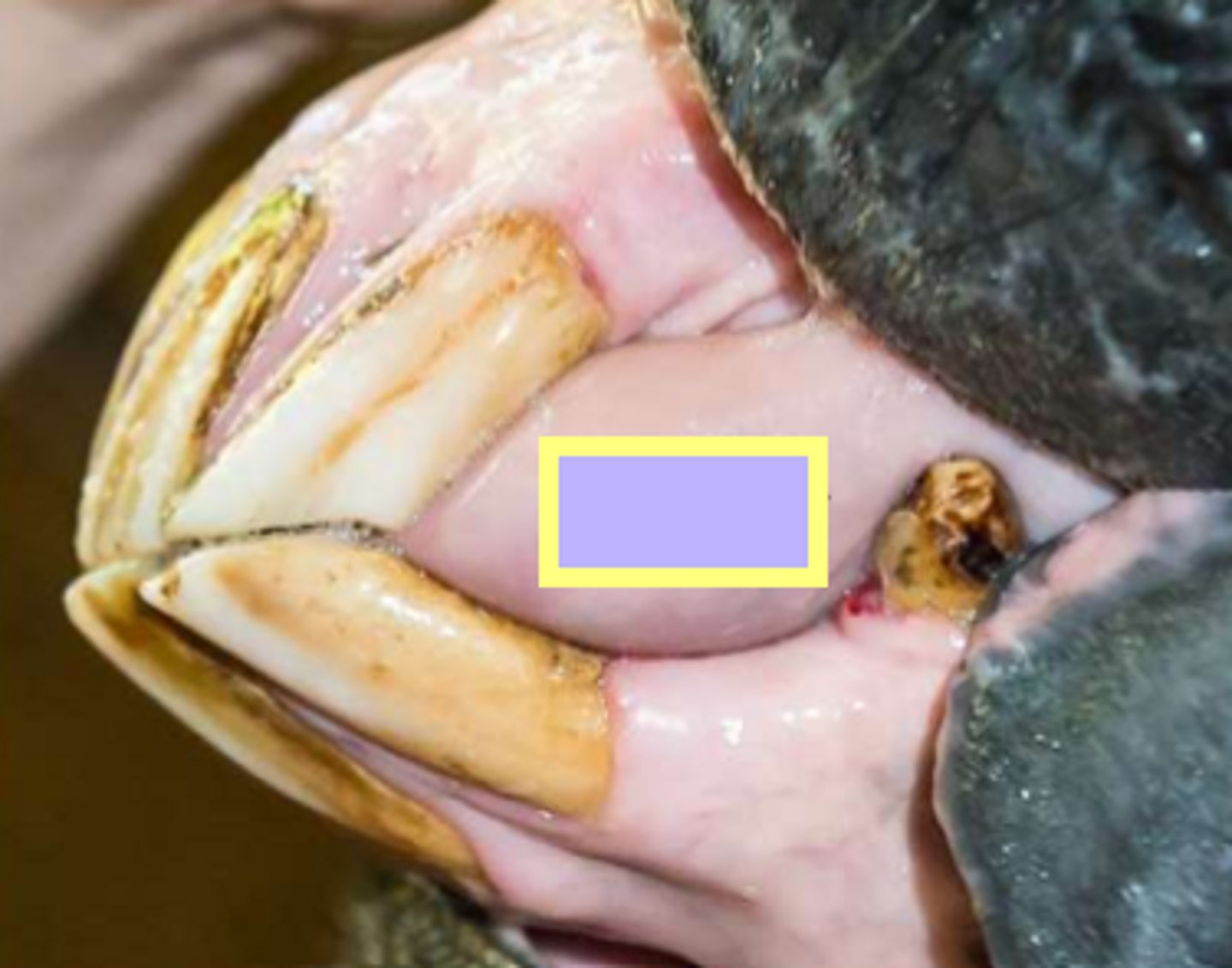
2.5 years
I1 permanent teeth erupt at ____________

3.5 years
I2 permanent teeth erupt at _____________
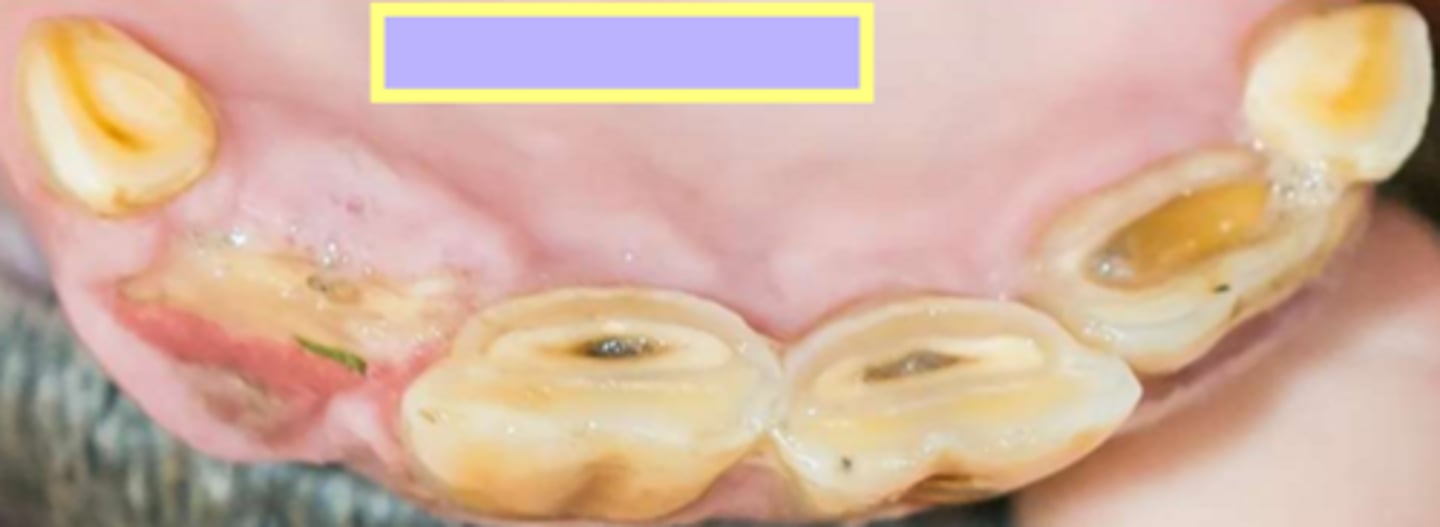
4.5 years
I3 permanent teeth erupt at _____________

6 months
How long does it take from eruption to full growth?

4.5-5 years
How old is a horse when a "full mouth" is seen?
5 years
age
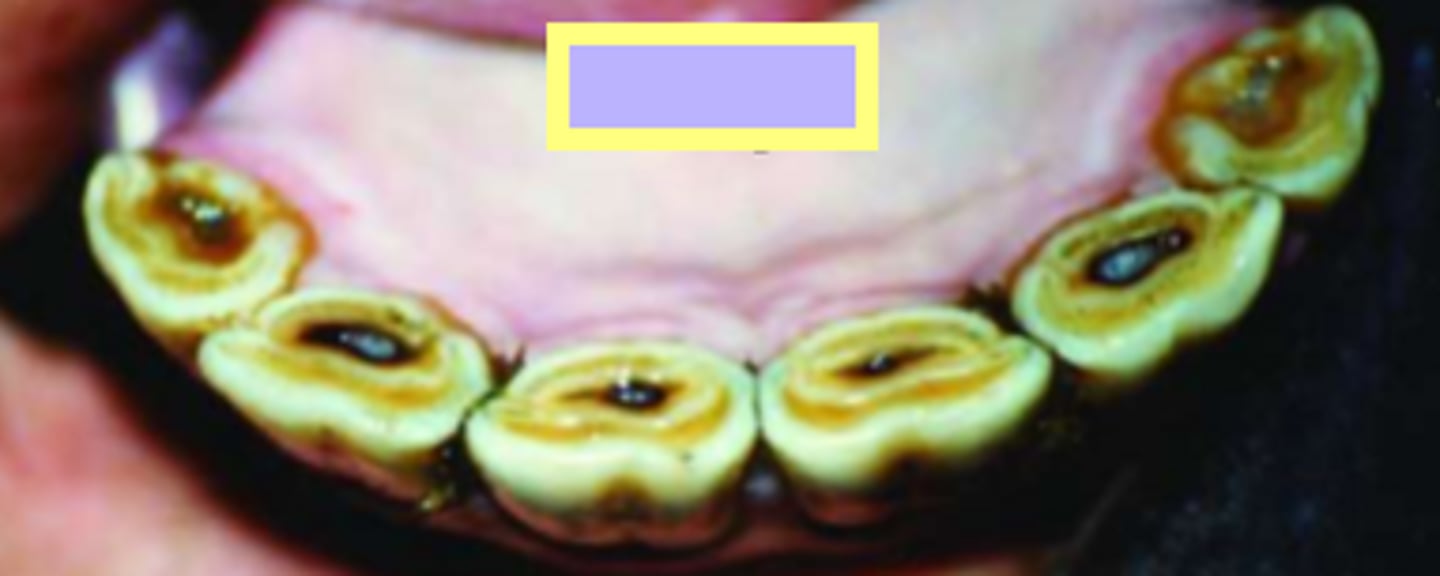
6 years
age

7 years
age

8 years
age

9 years
age

10 years
age

11 years
age

15 years
age
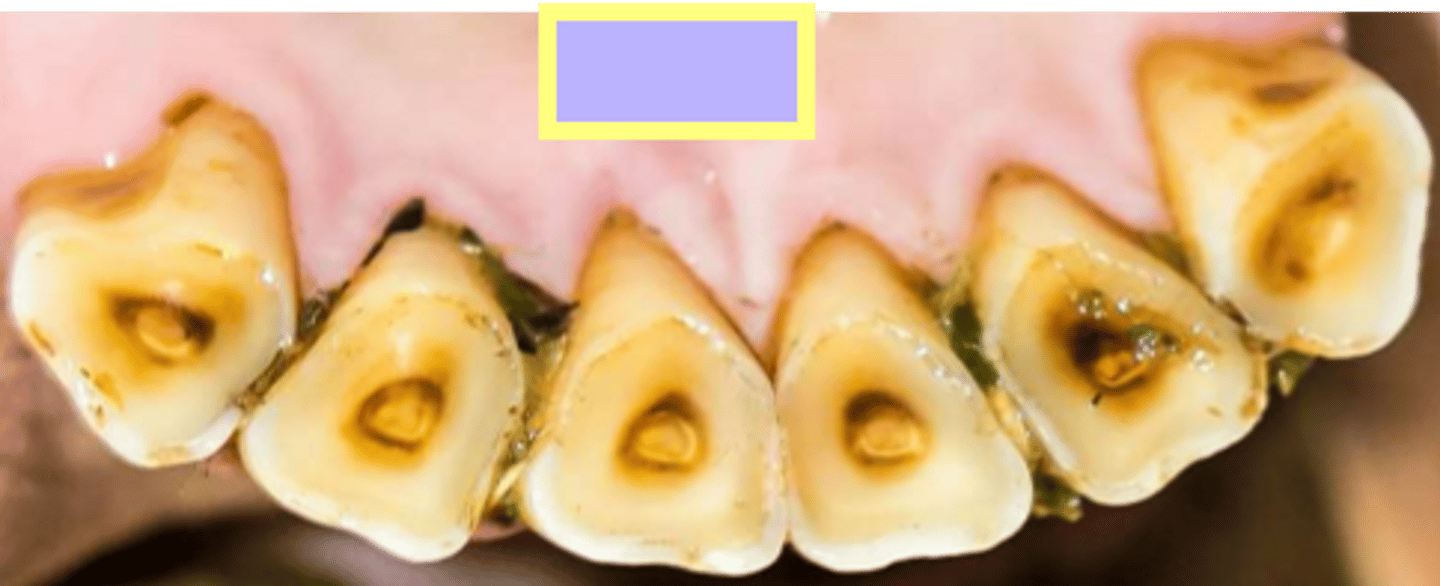
20 years
age

11 years
age
Galvayne's groove at top

15 years
age
Galvayne's groove at middle

20 years
age
Galvayne's groove at bottom
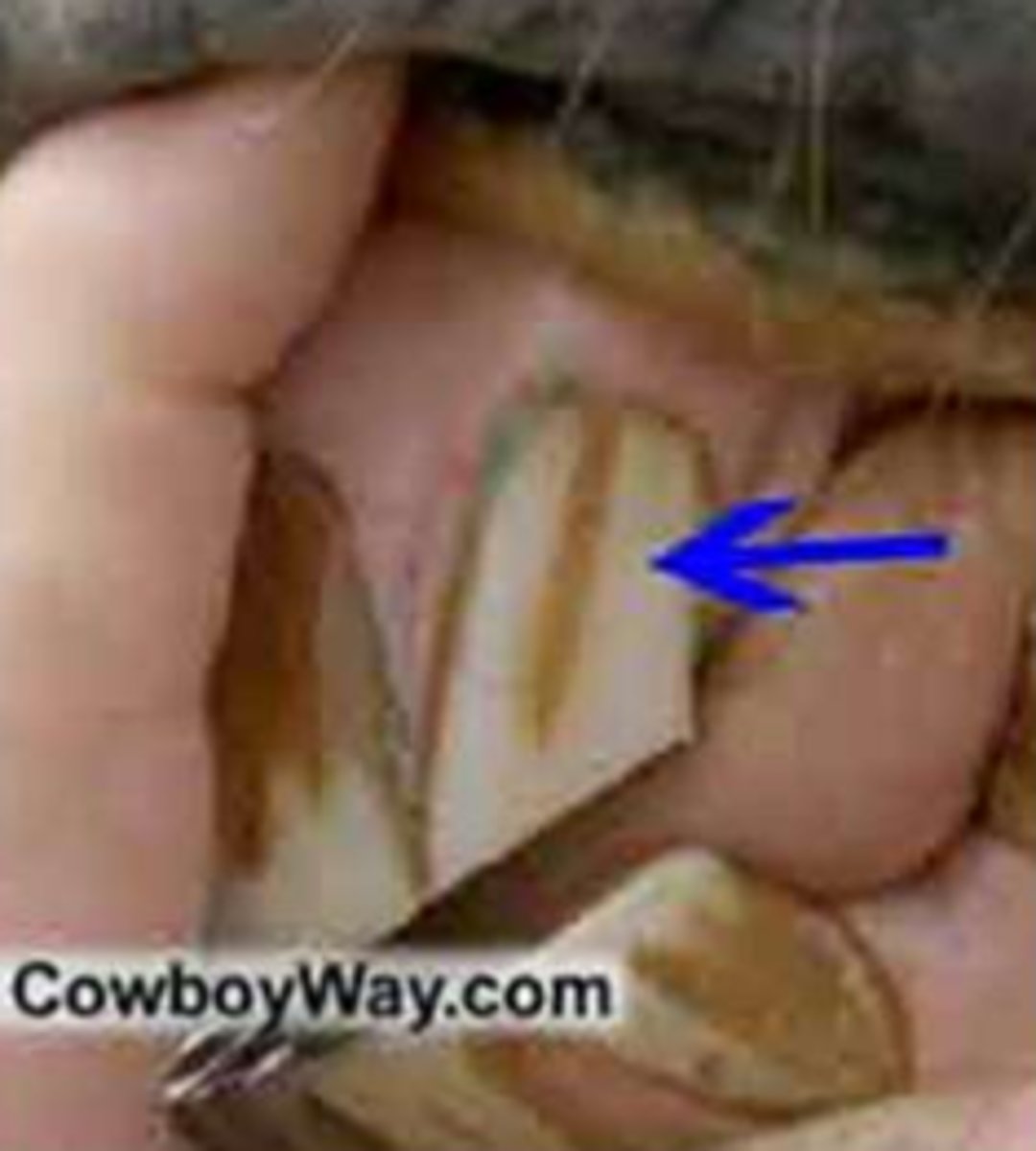
24 years
age

30 years
age
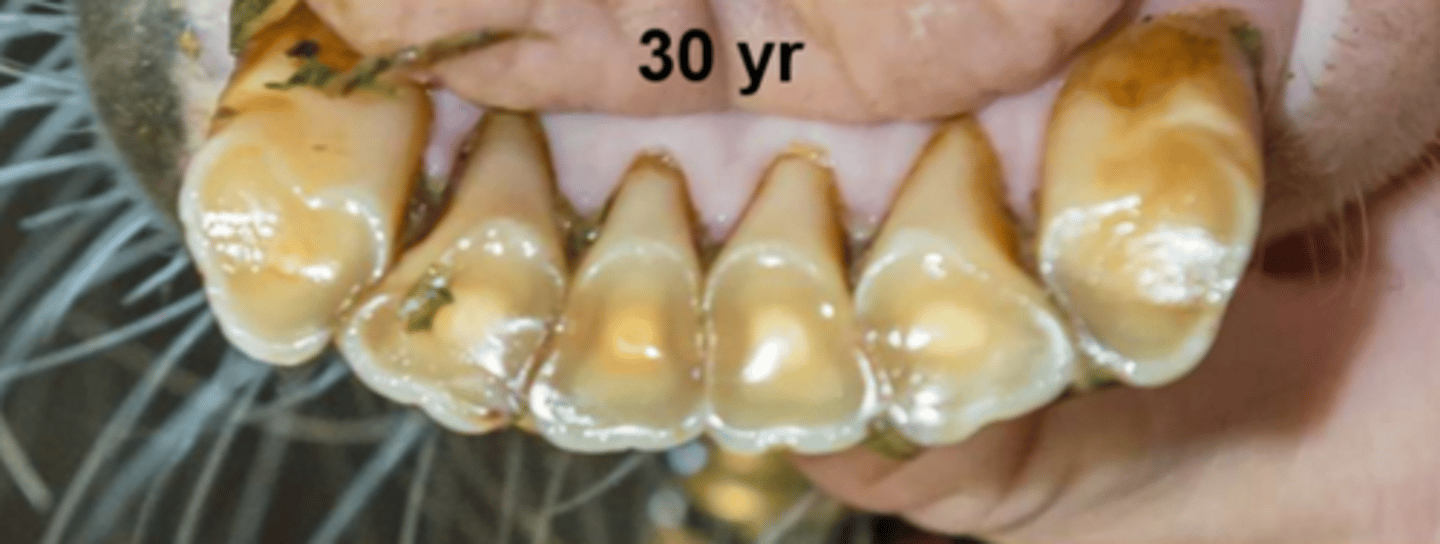
rima oris/oral fissure
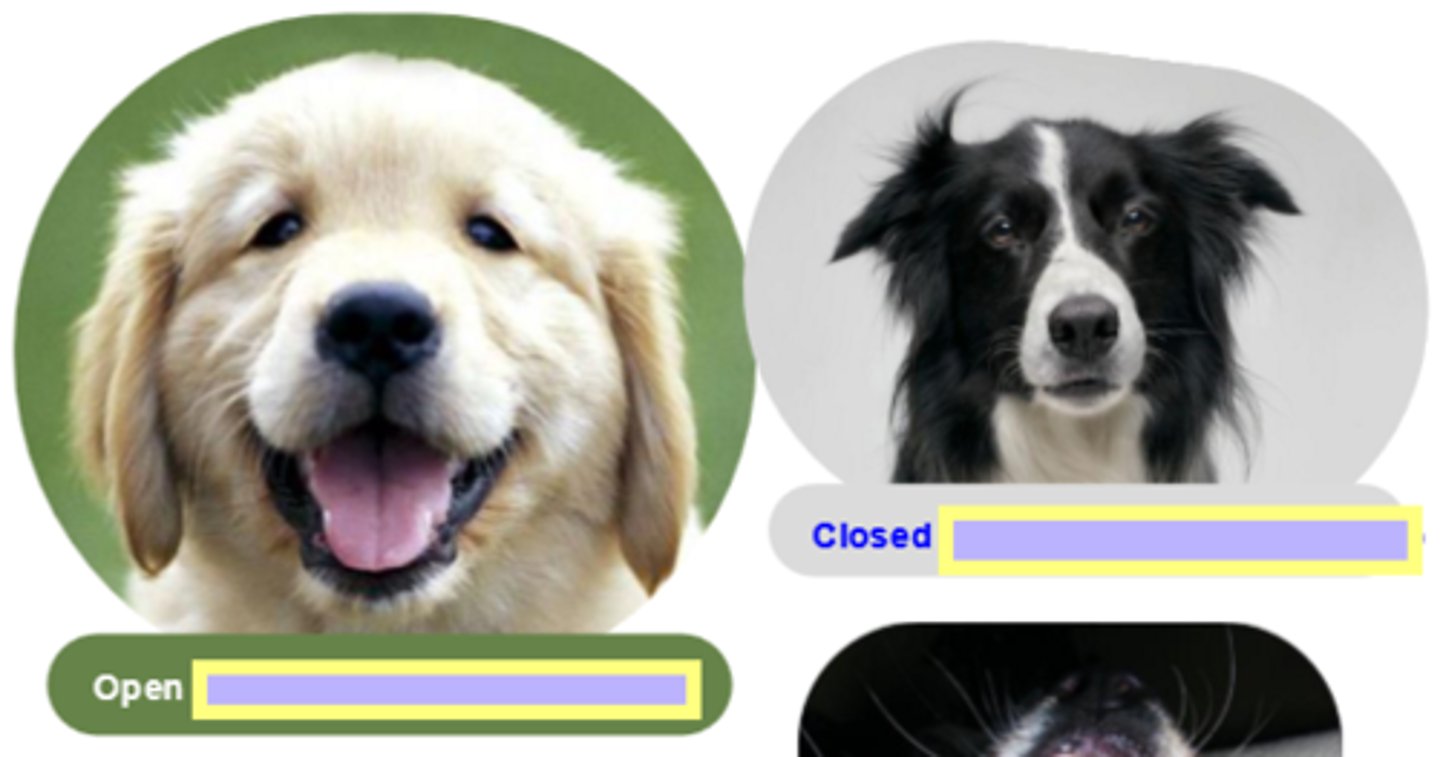
palatoglossal arches/folds

oral commissure/angle of the mouth
- point where the upper and lower lips meet

labia oris
- lips
- keratinized skin
- connective tissue
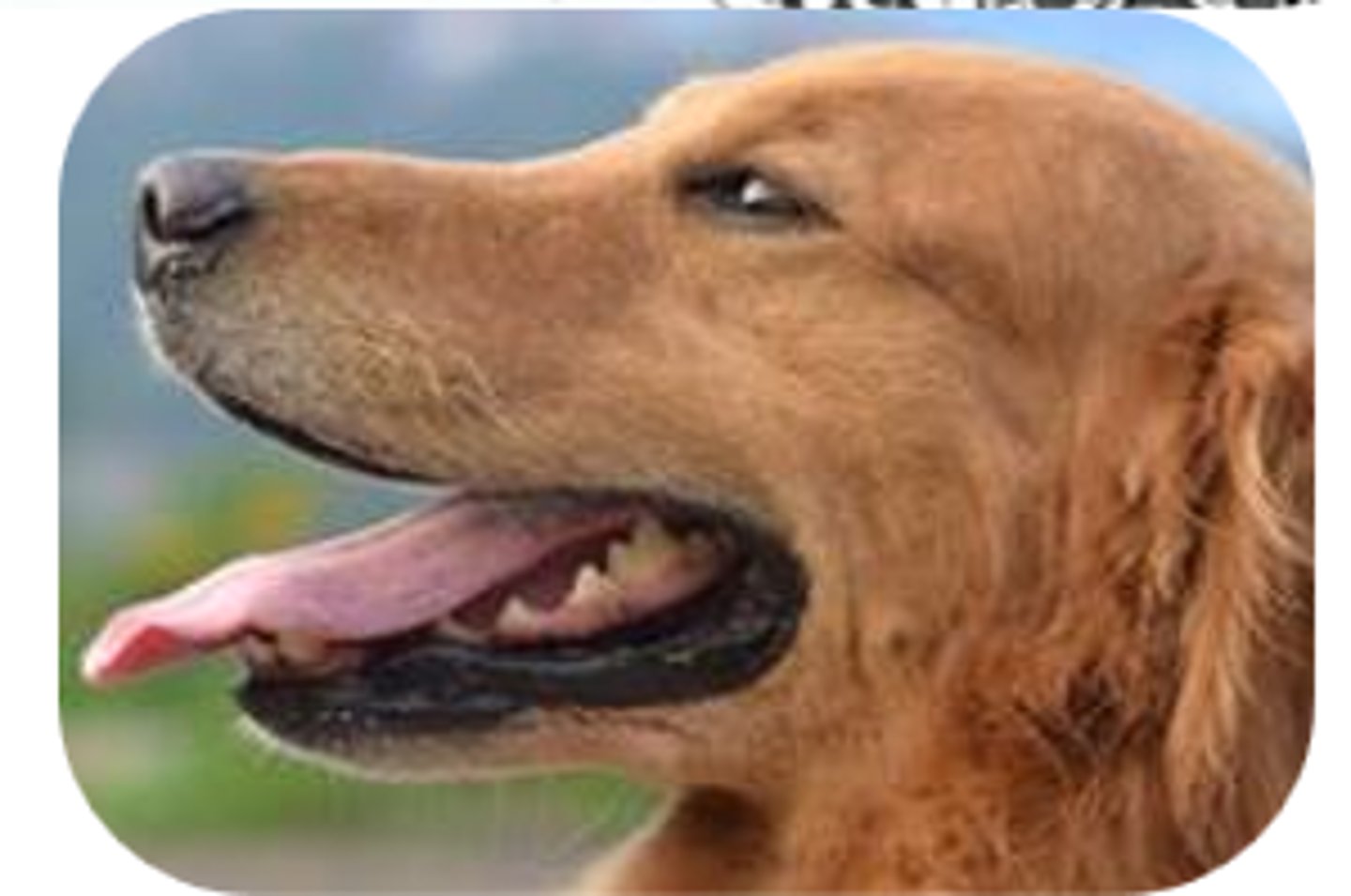
orbicularis oris muscle
- circular muscle
- supports the lips
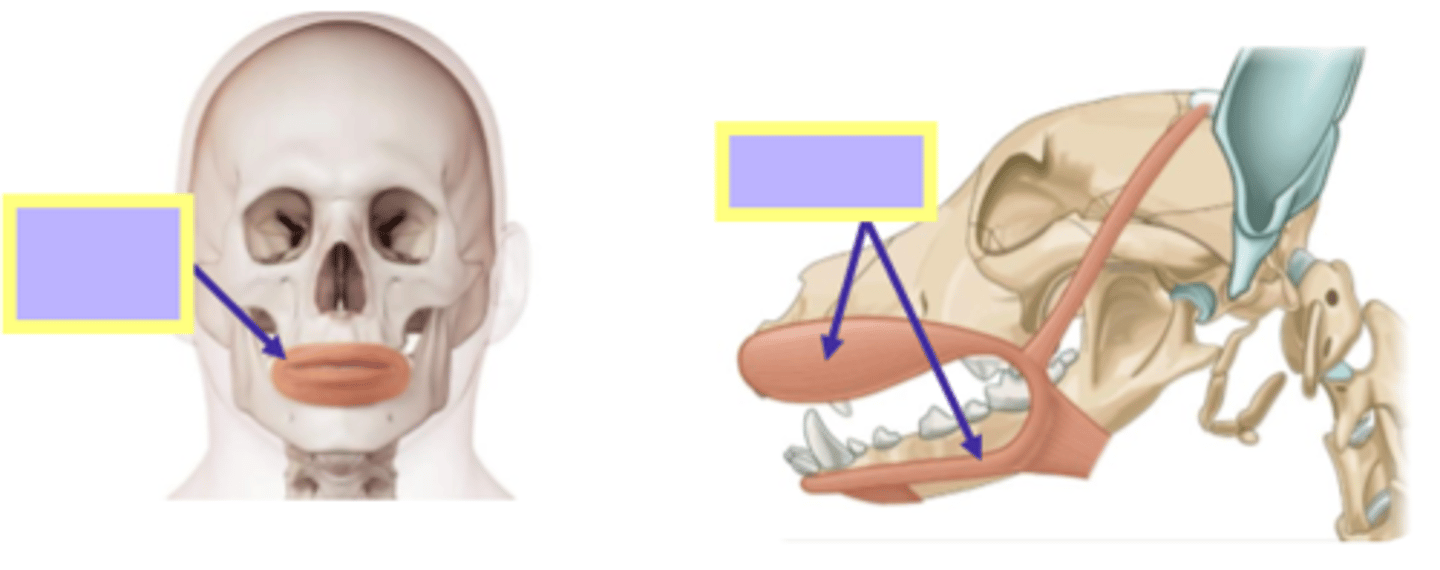
orbicularis oris muscle
lips:
- 1
- circular muscle
- supports the lips
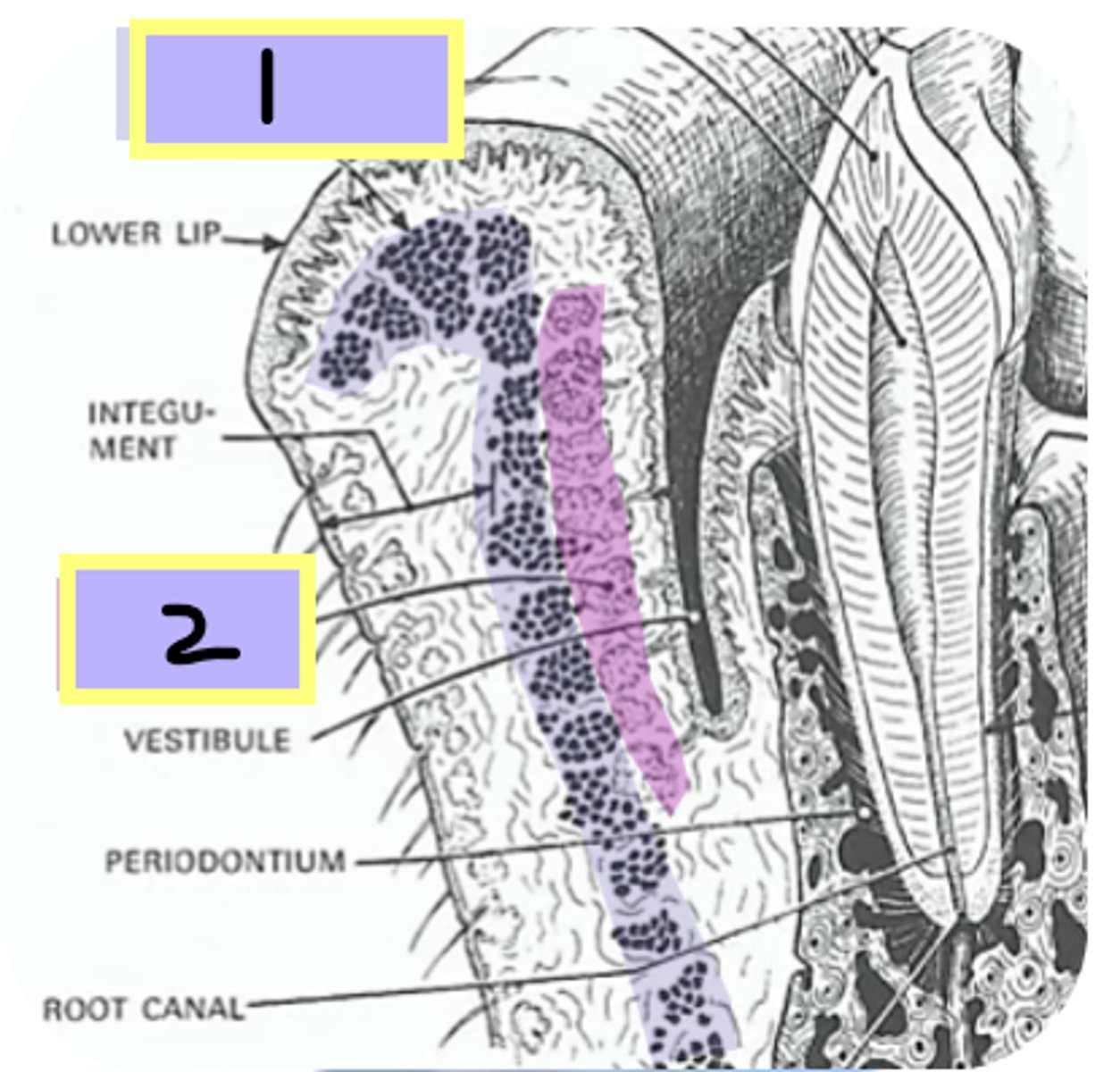
orbicularis oris muscle
- circular muscle
- supports the lips

labial glands
lips:
- 2
- mucosa made up of stratified squamous epithelium includes ________, minor salivary glands on the oral surface
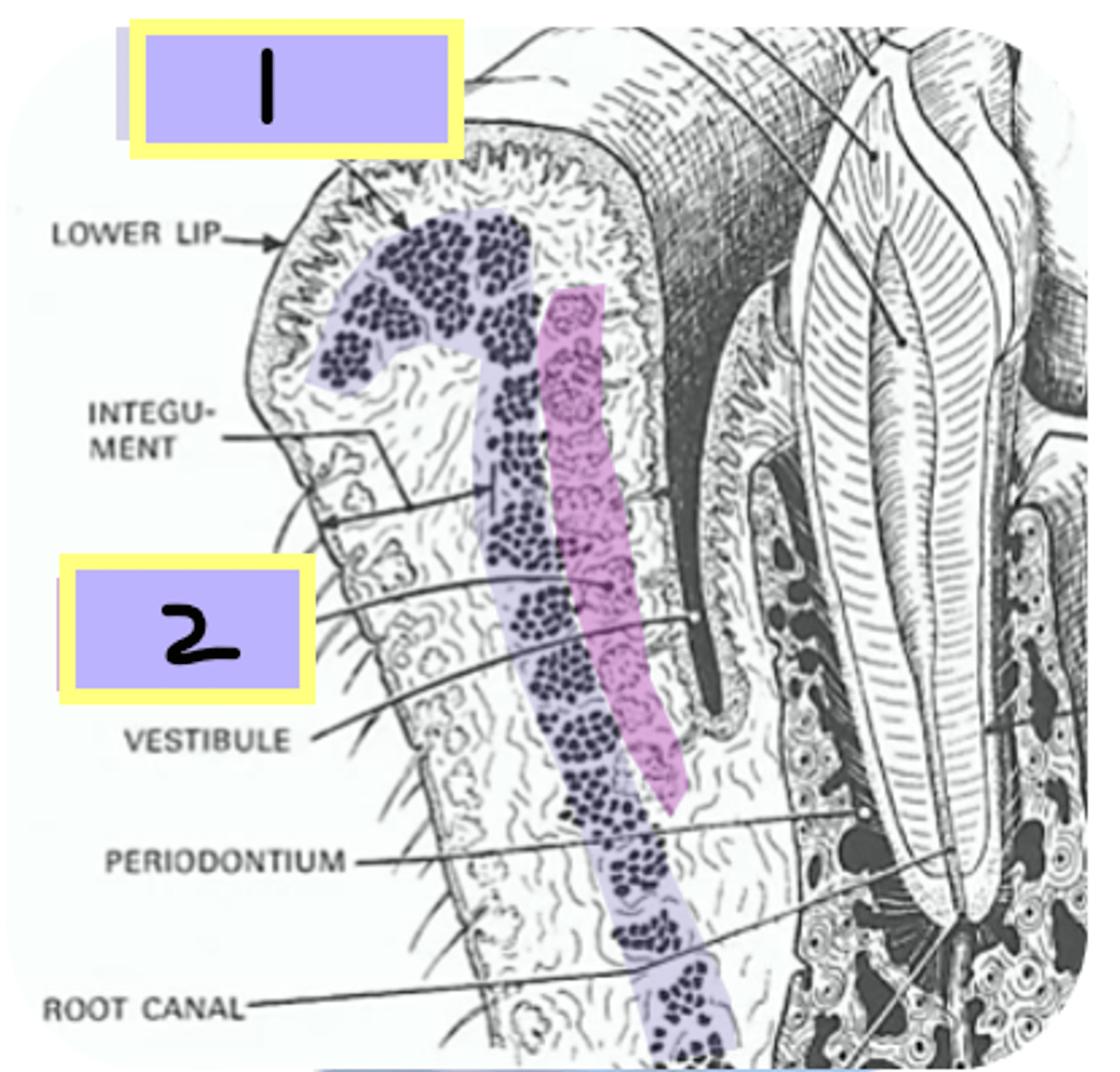
lip frenulum
- thin tissue connecting the lips to the gums
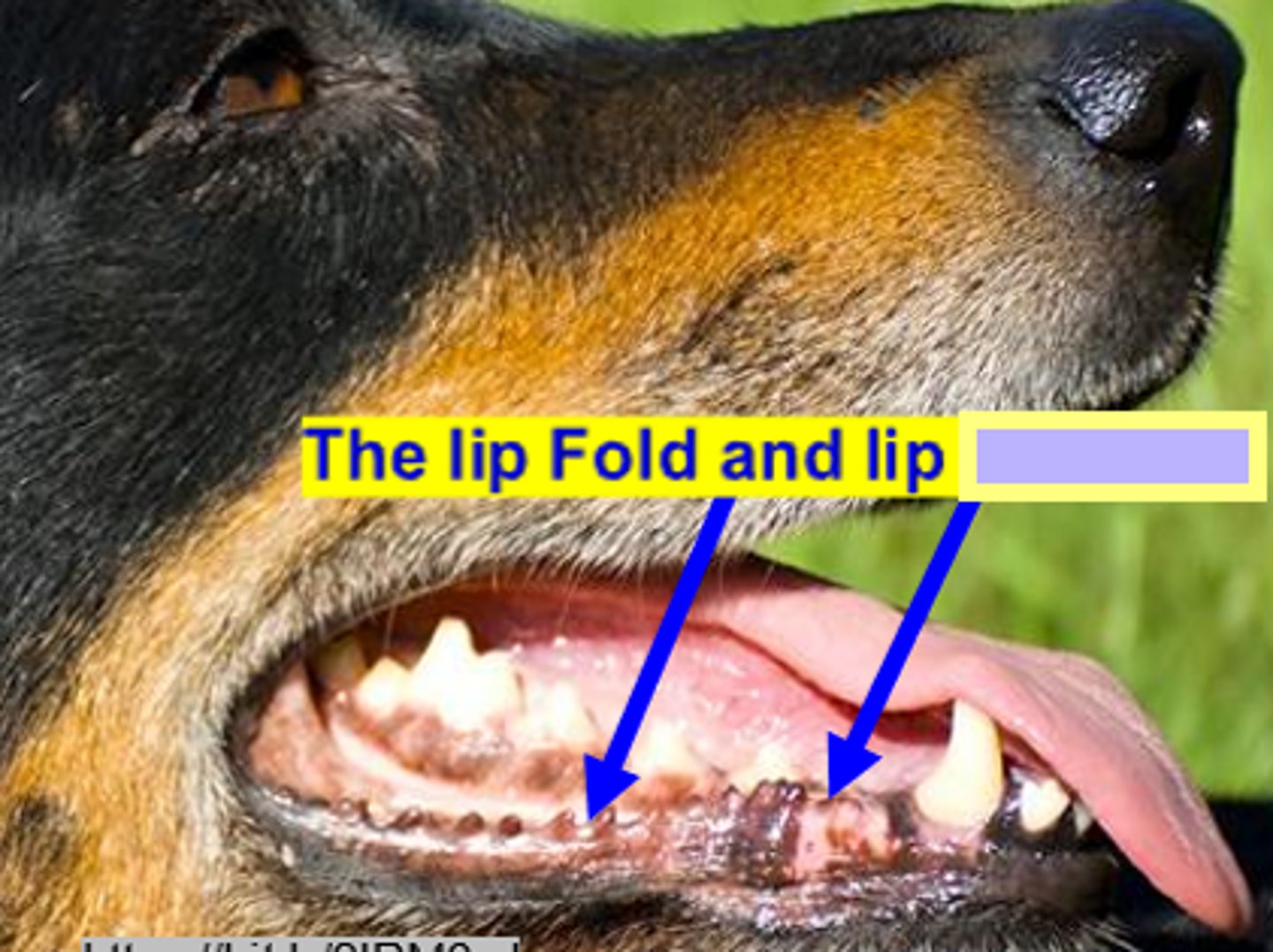
conical buccal papillae
- ruminants
- backward pointing
- prevents loss of food while chewing
